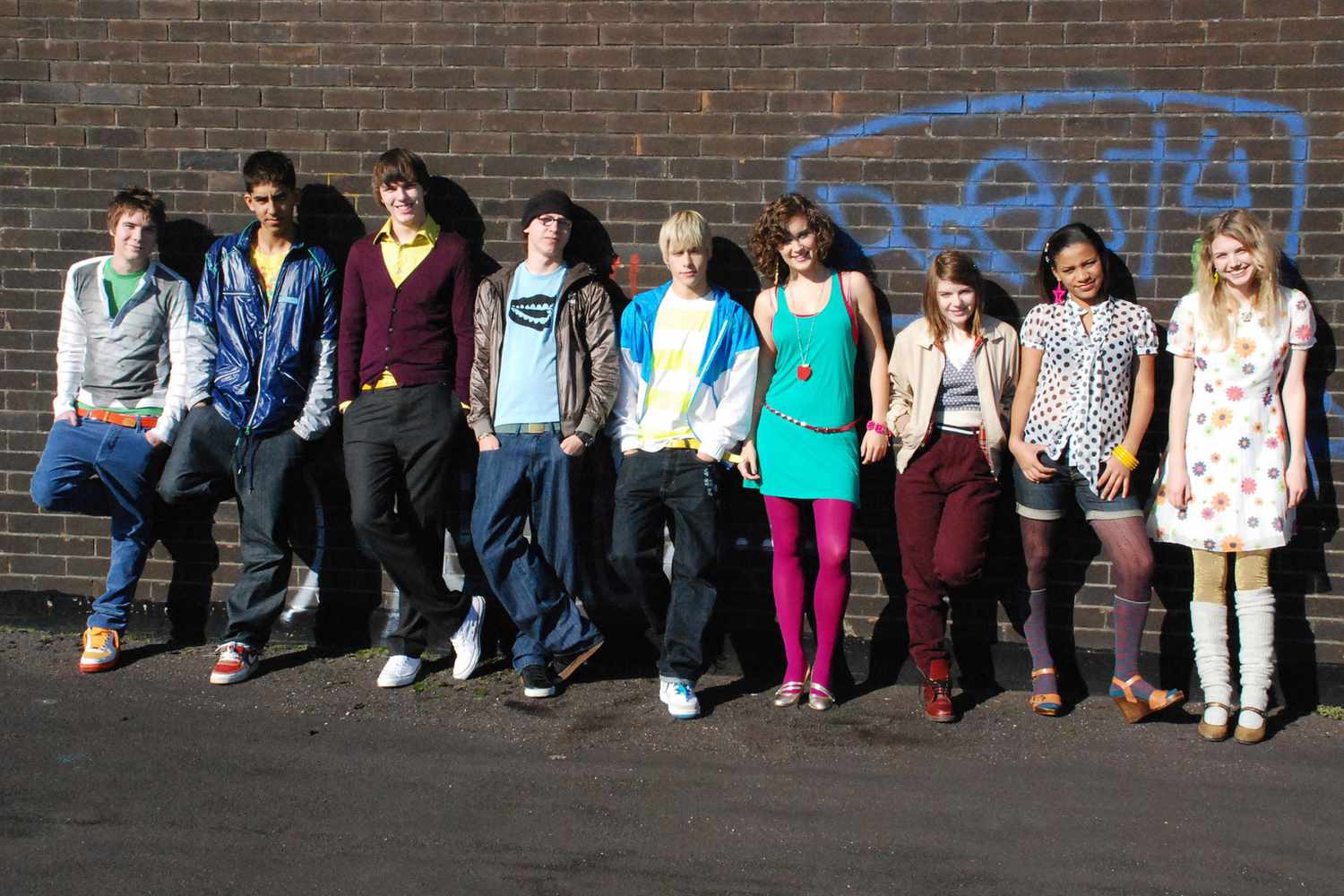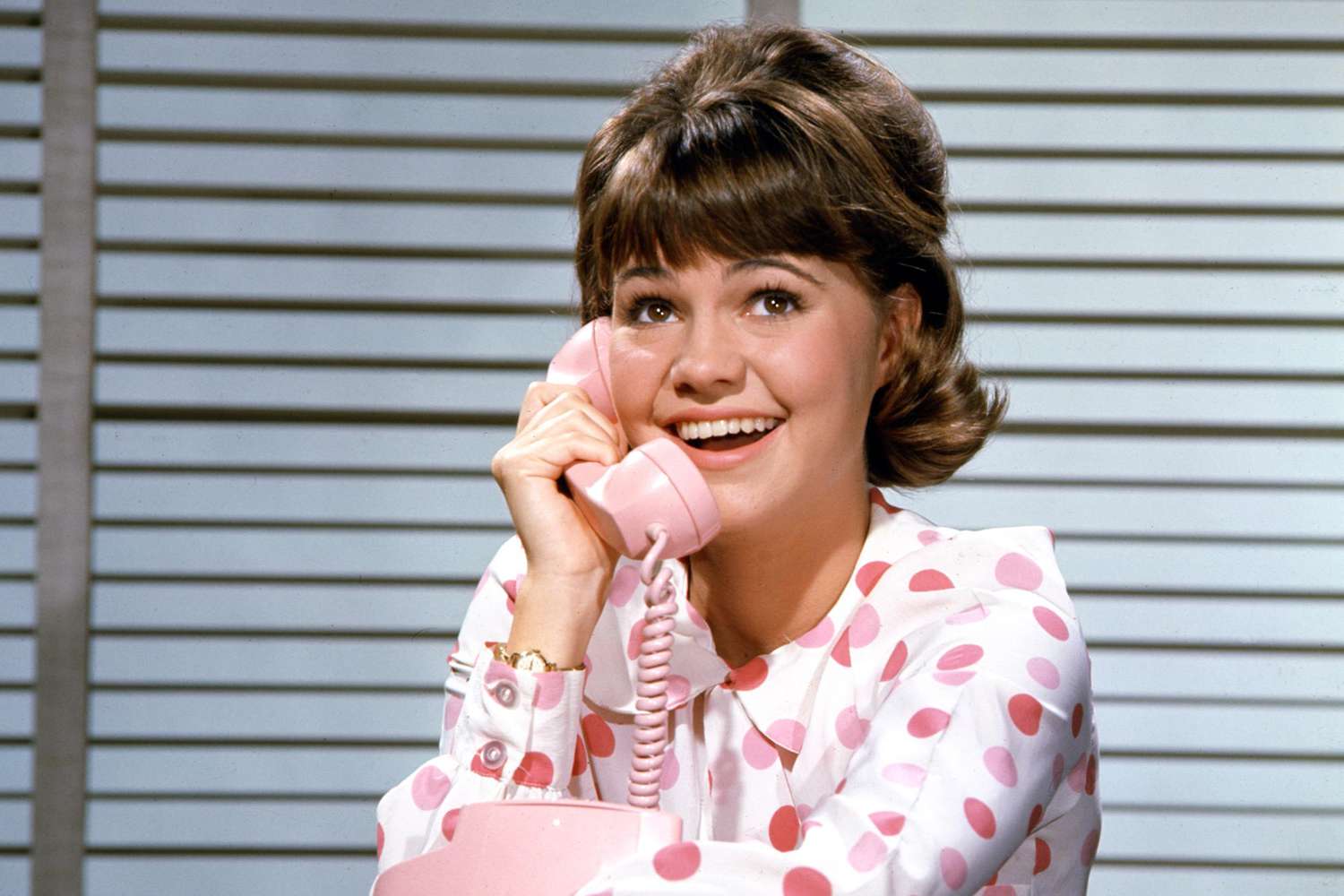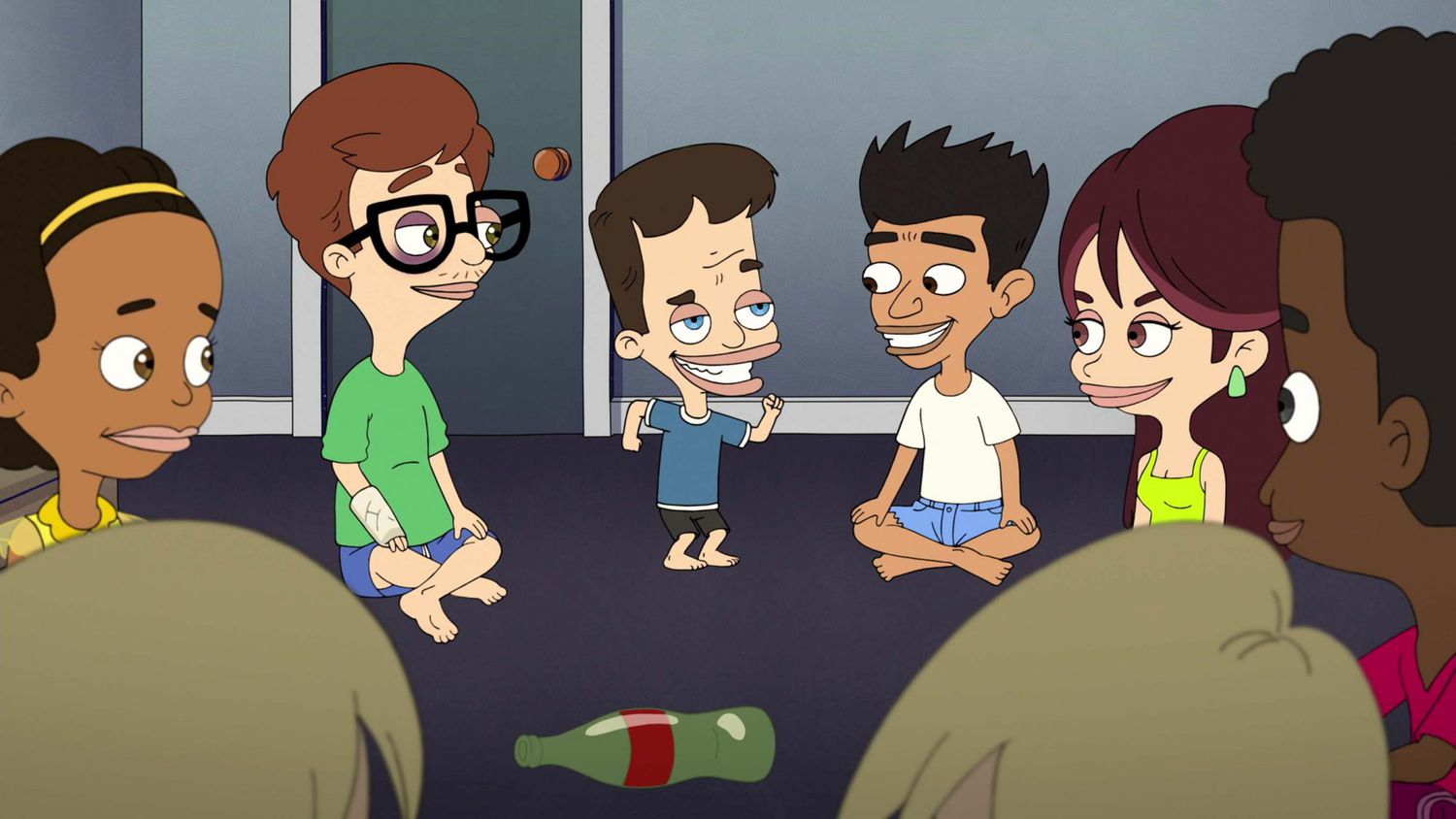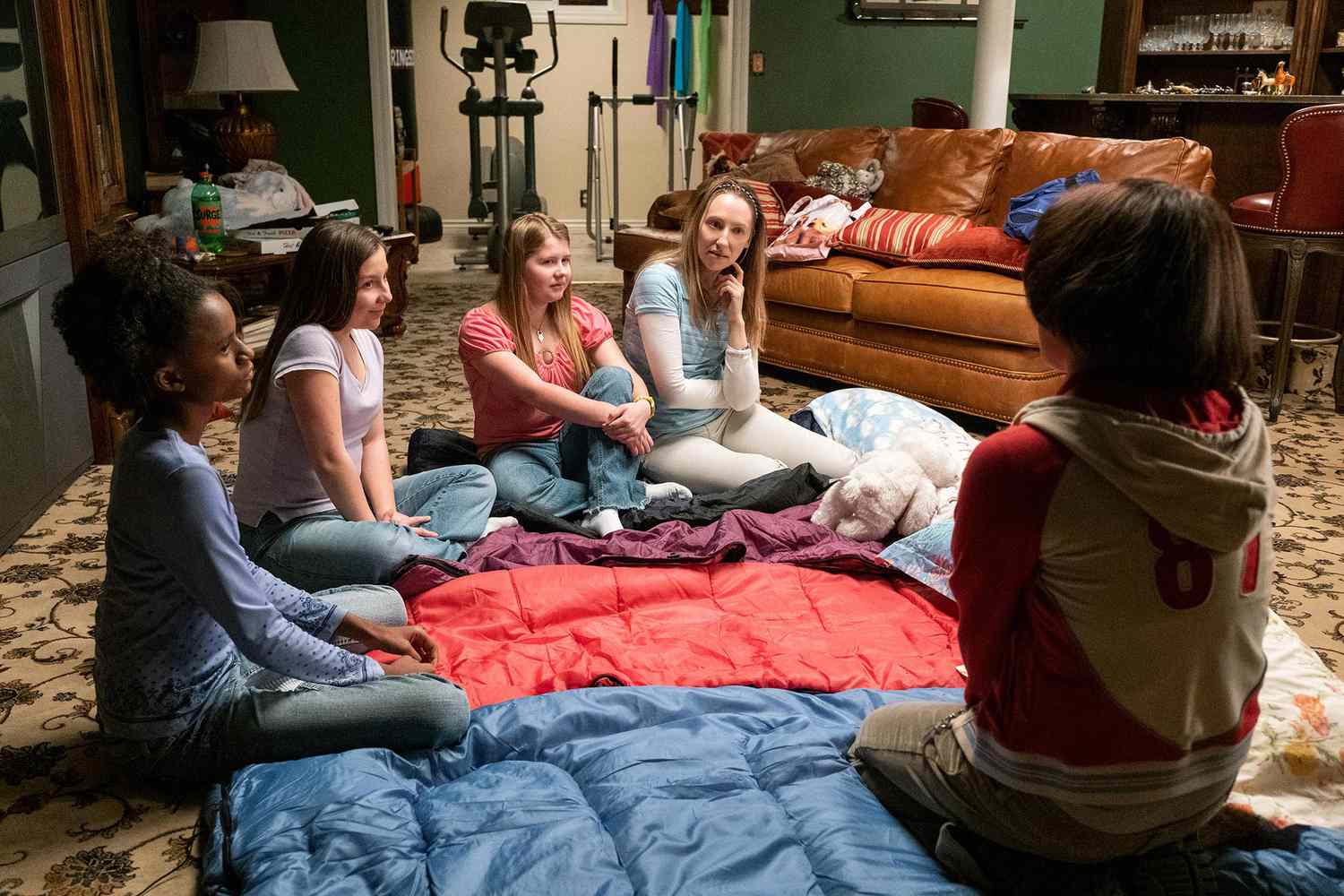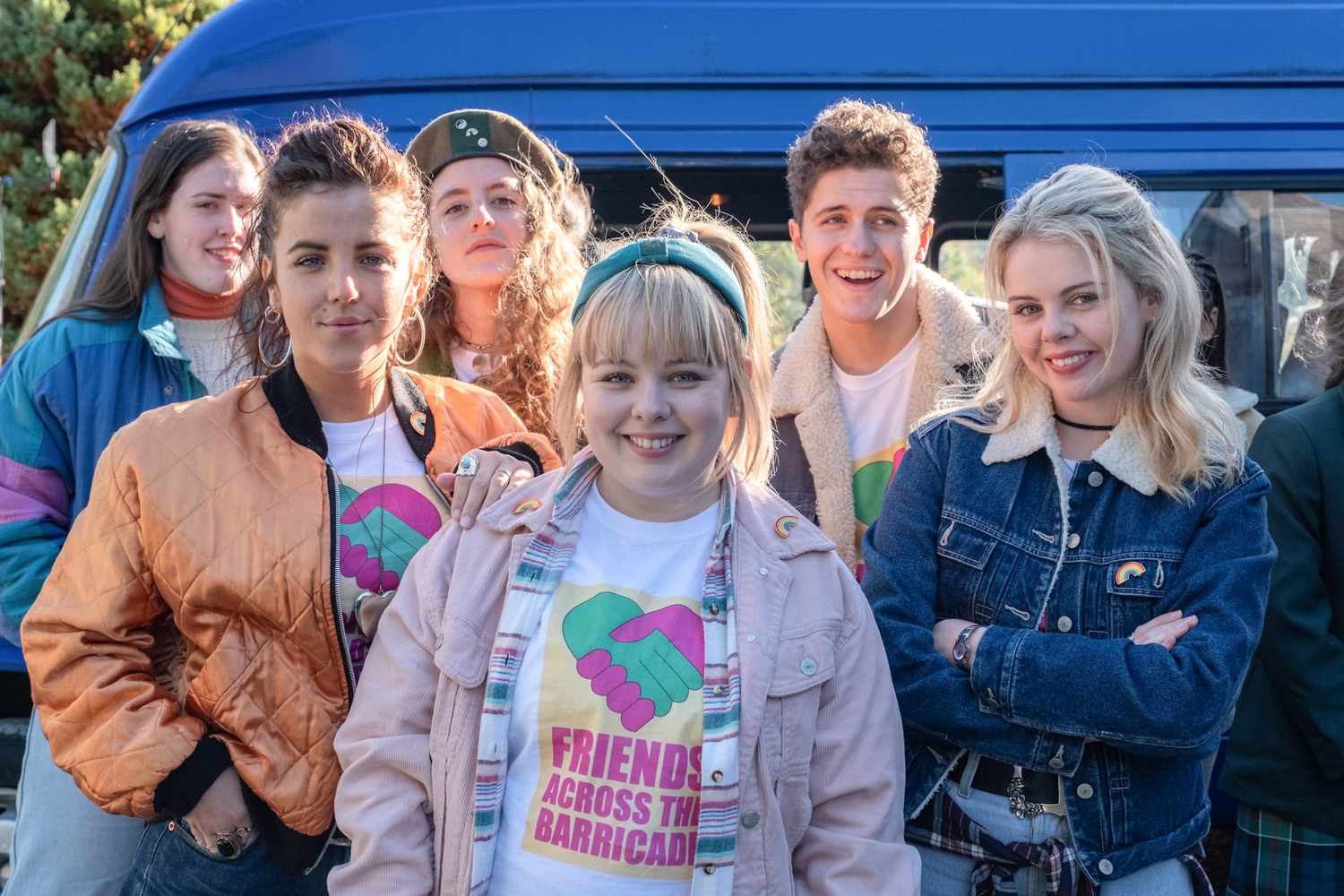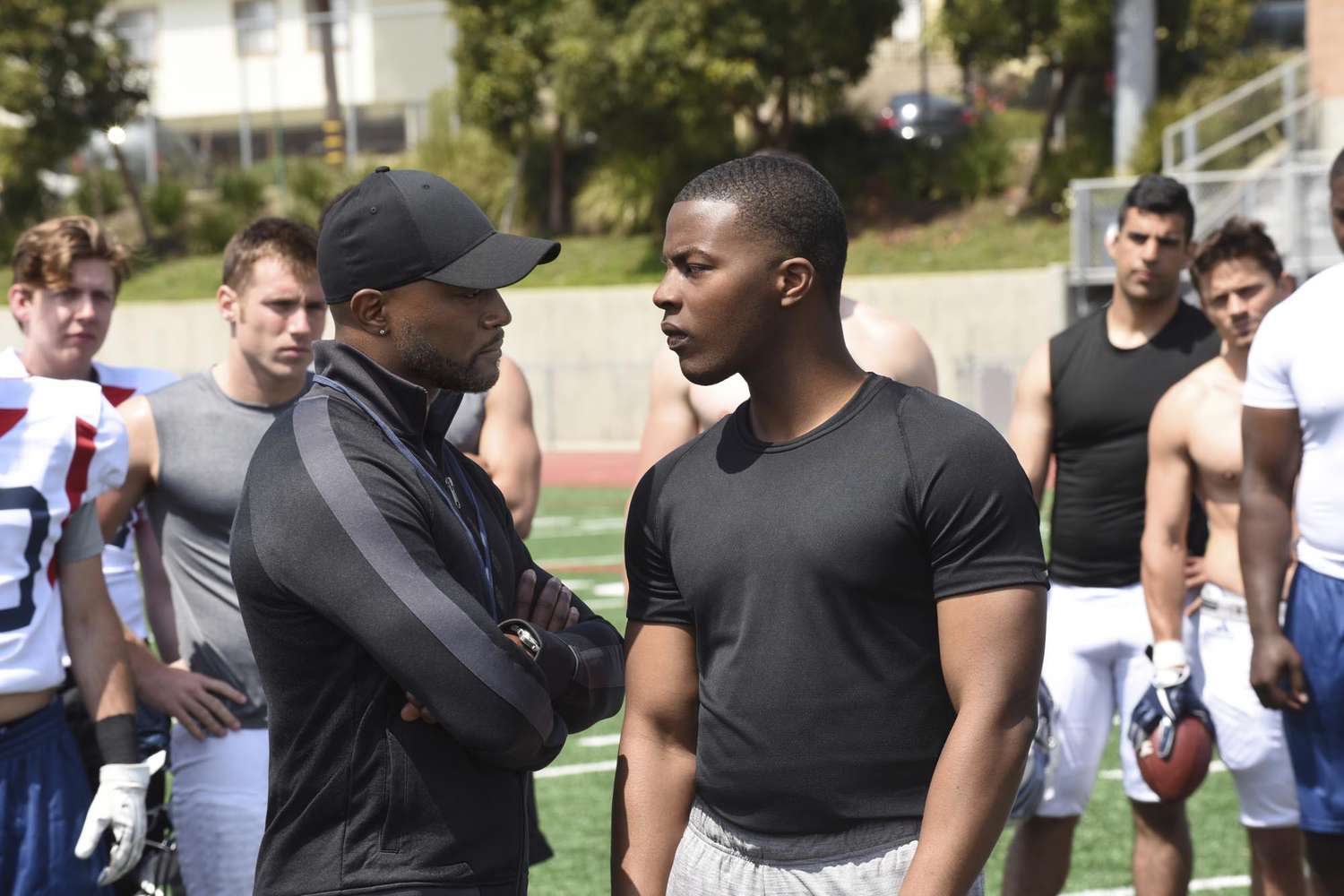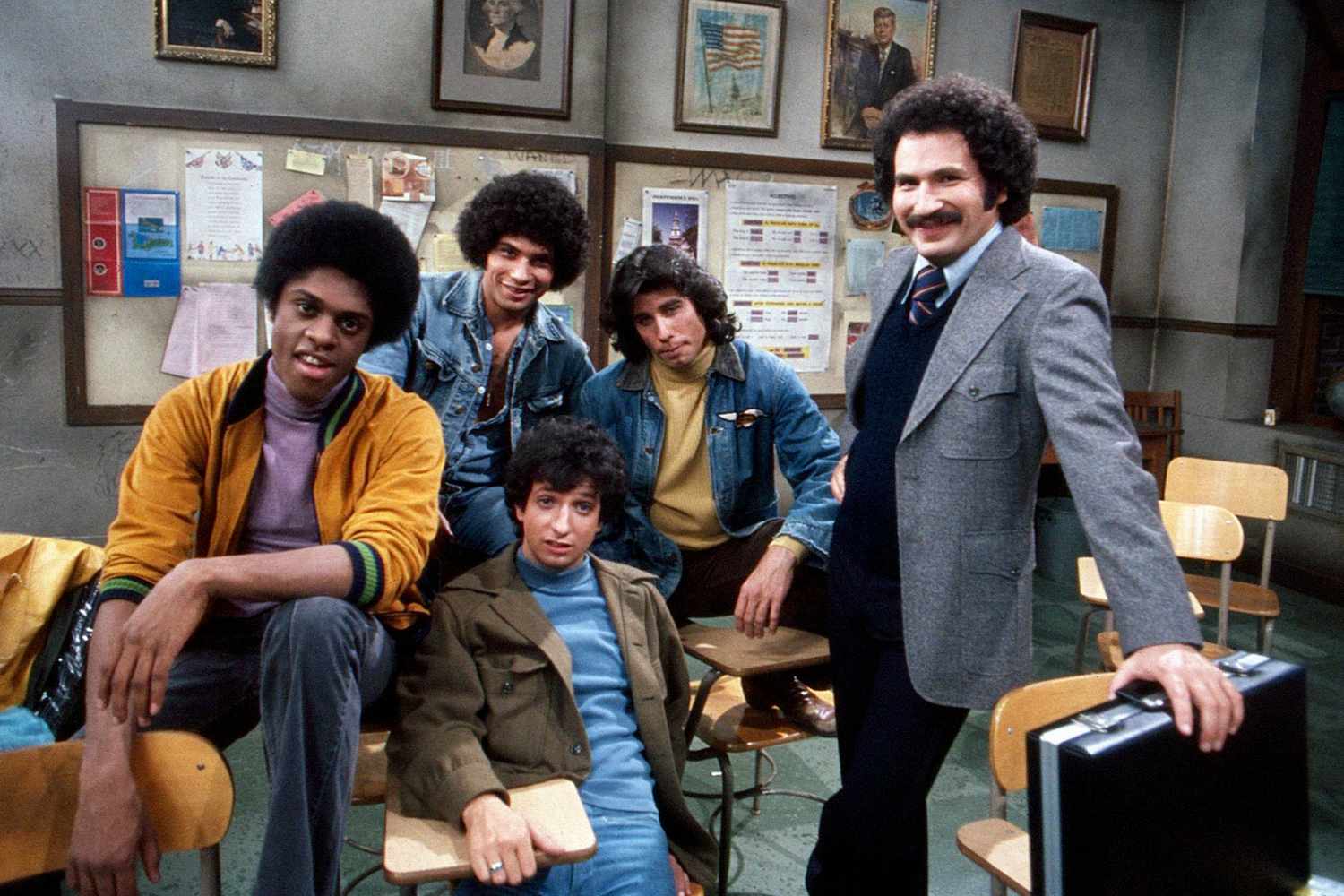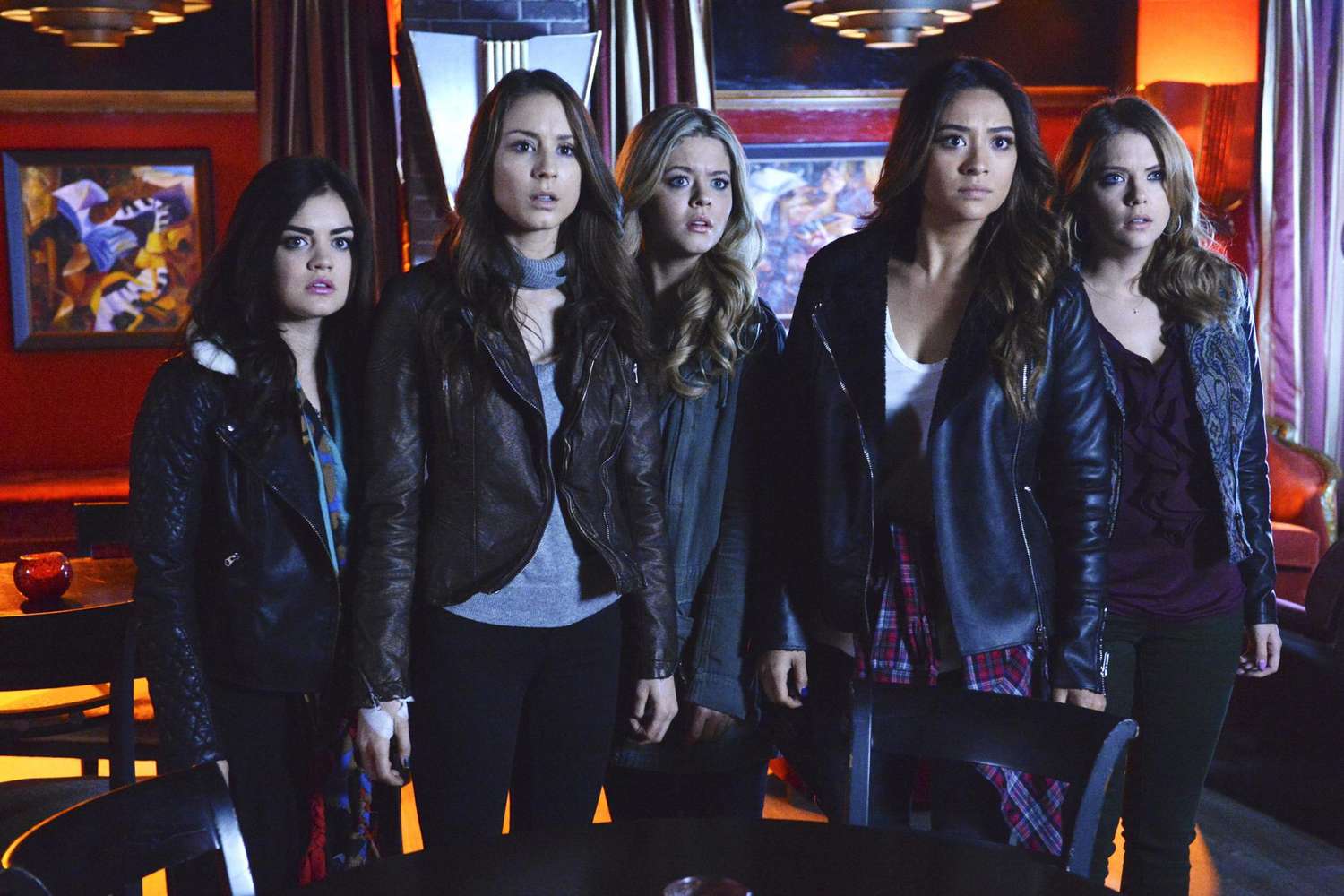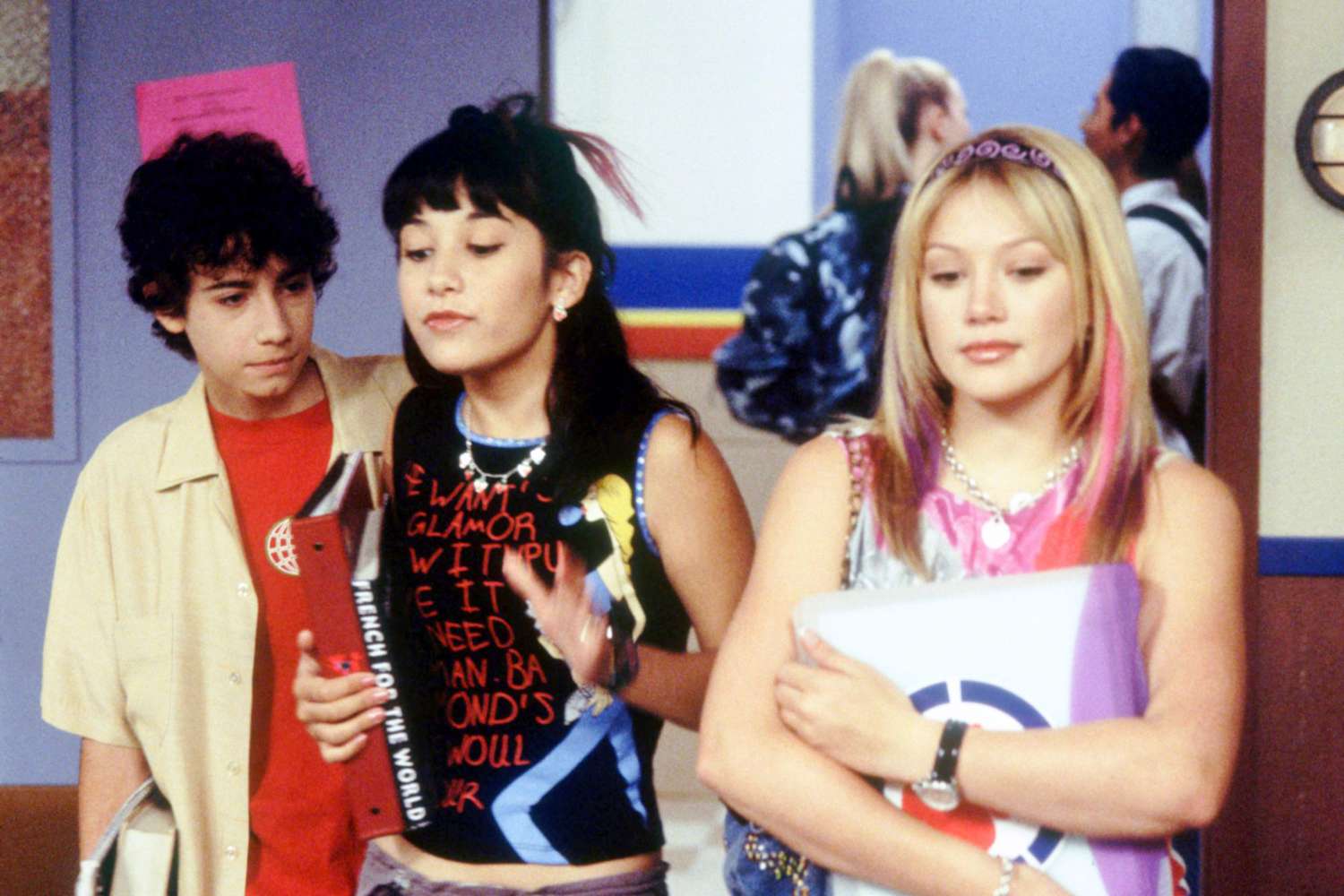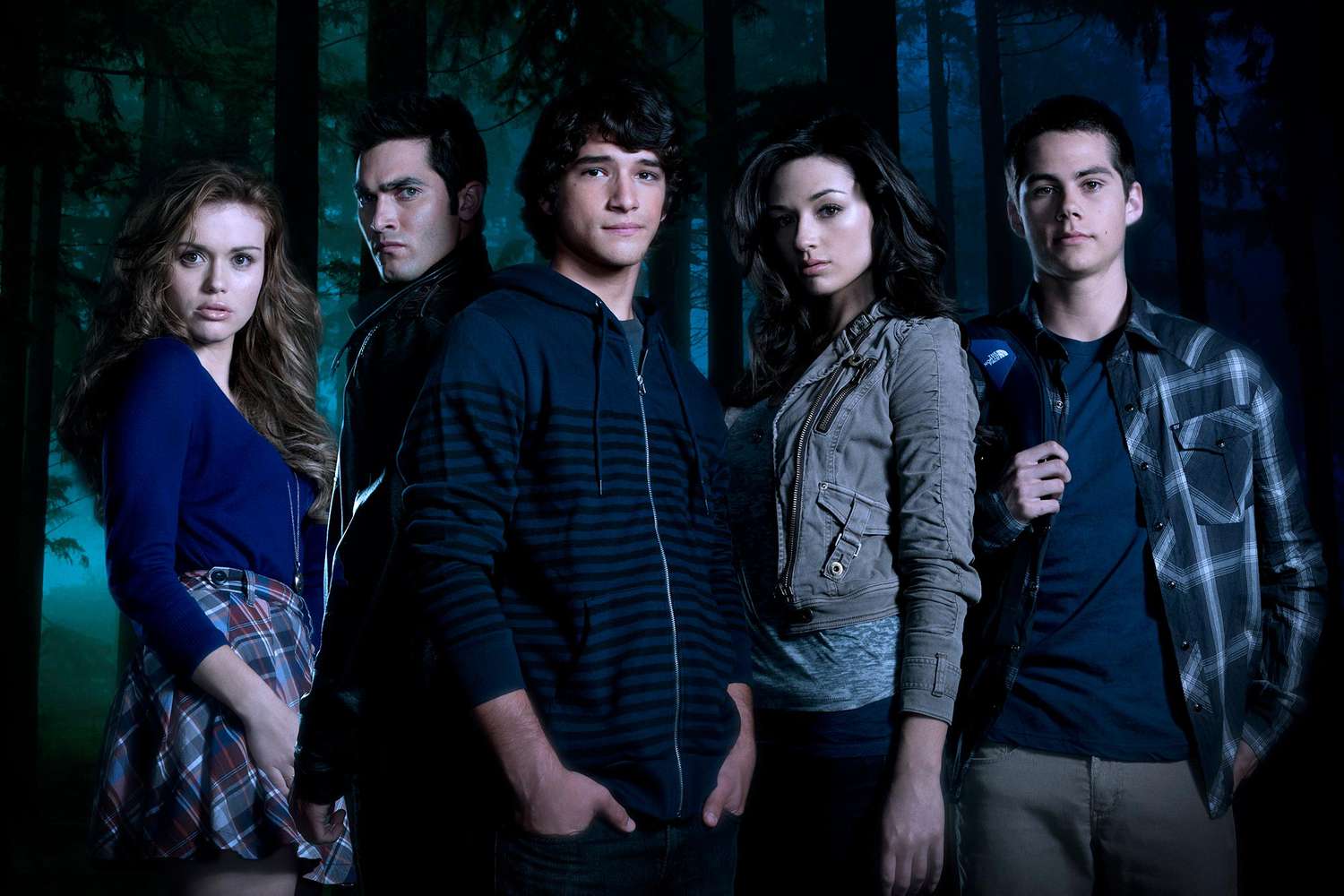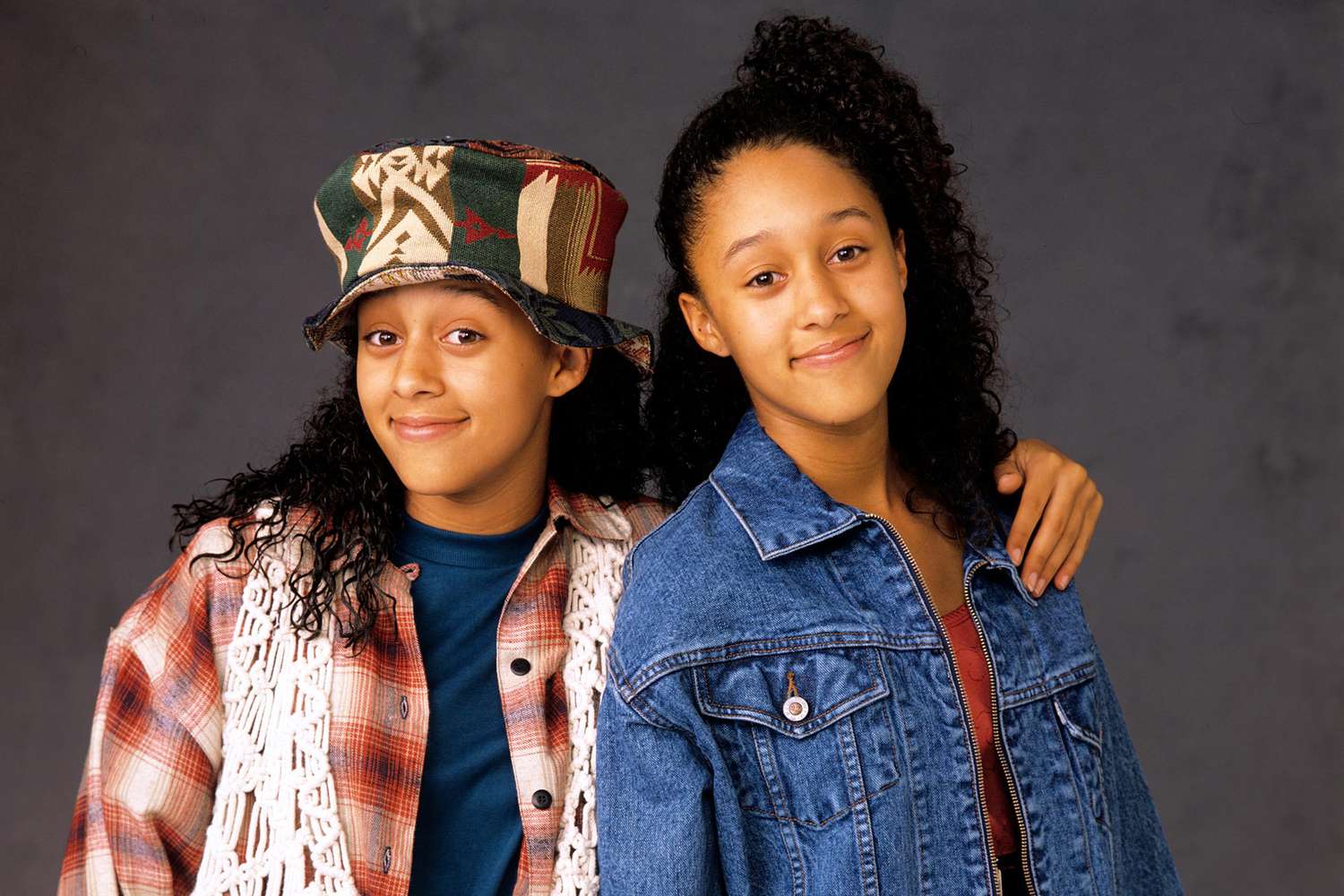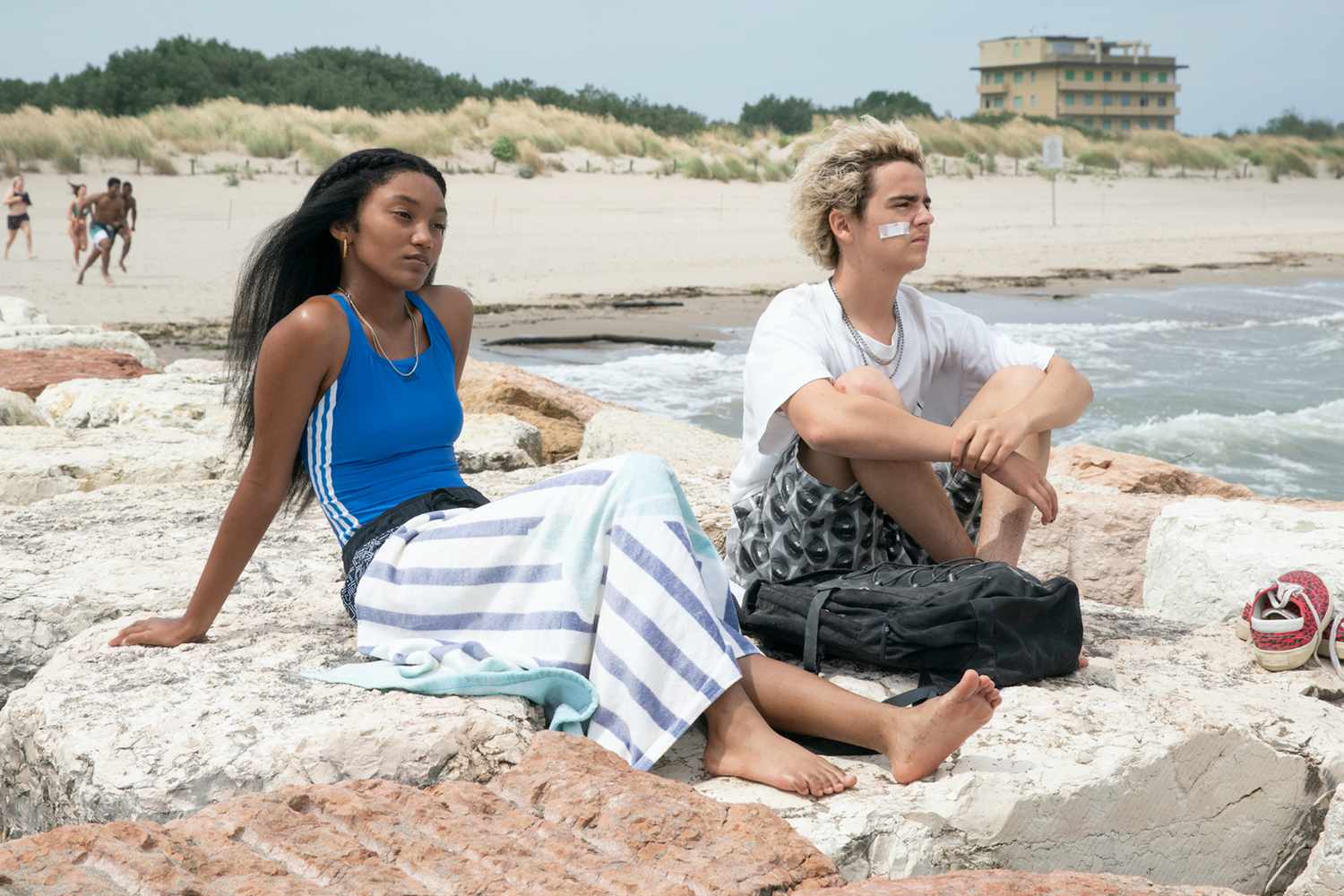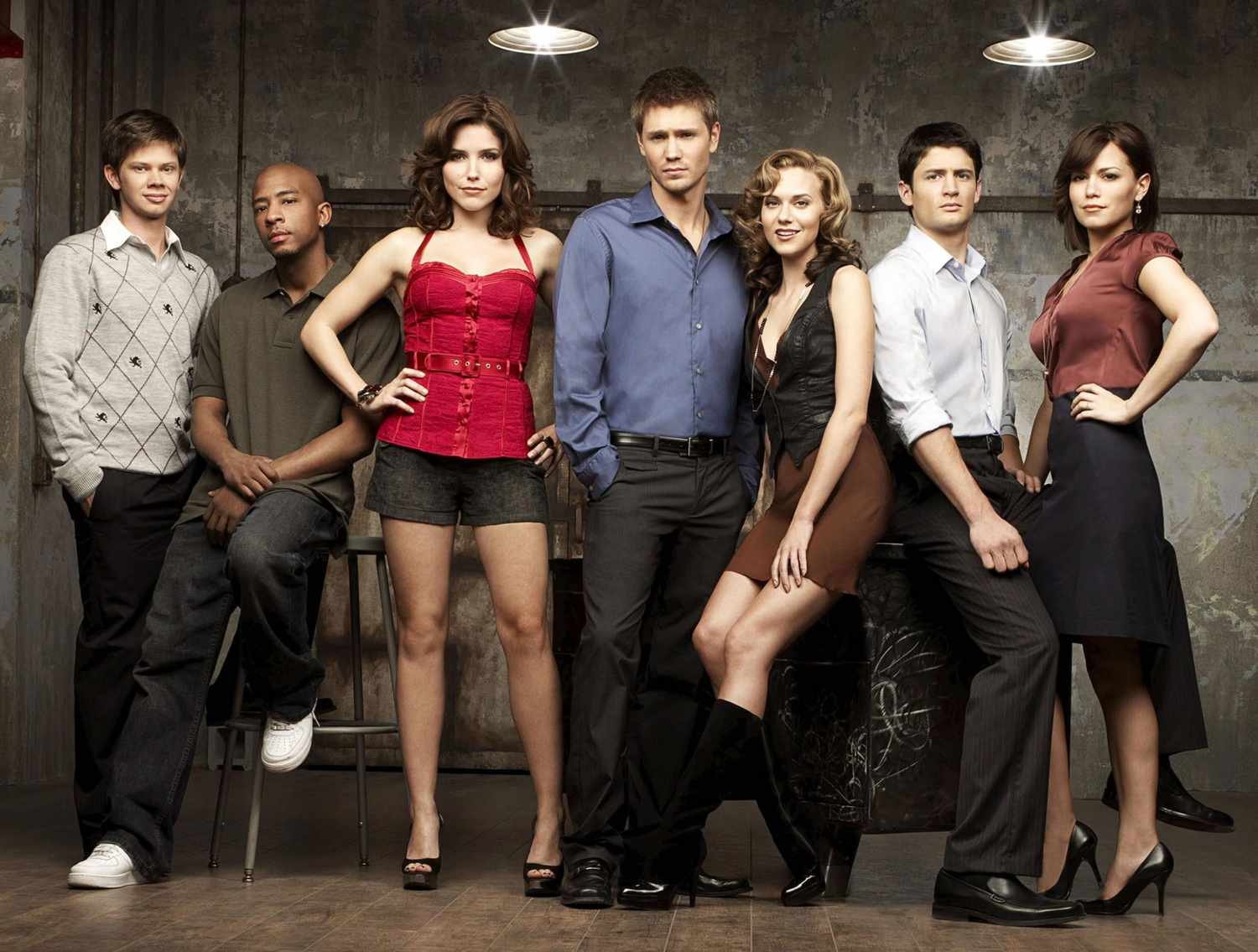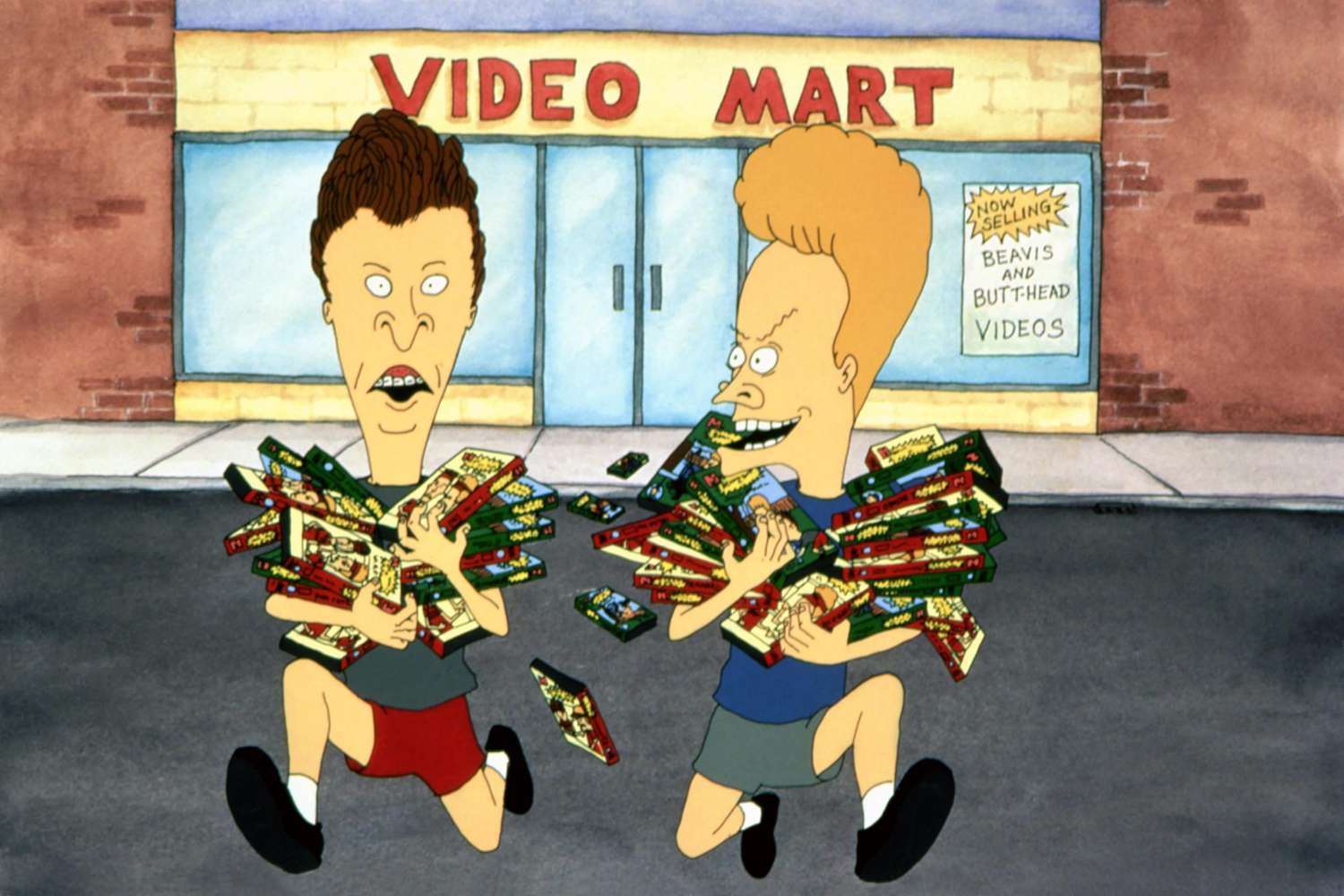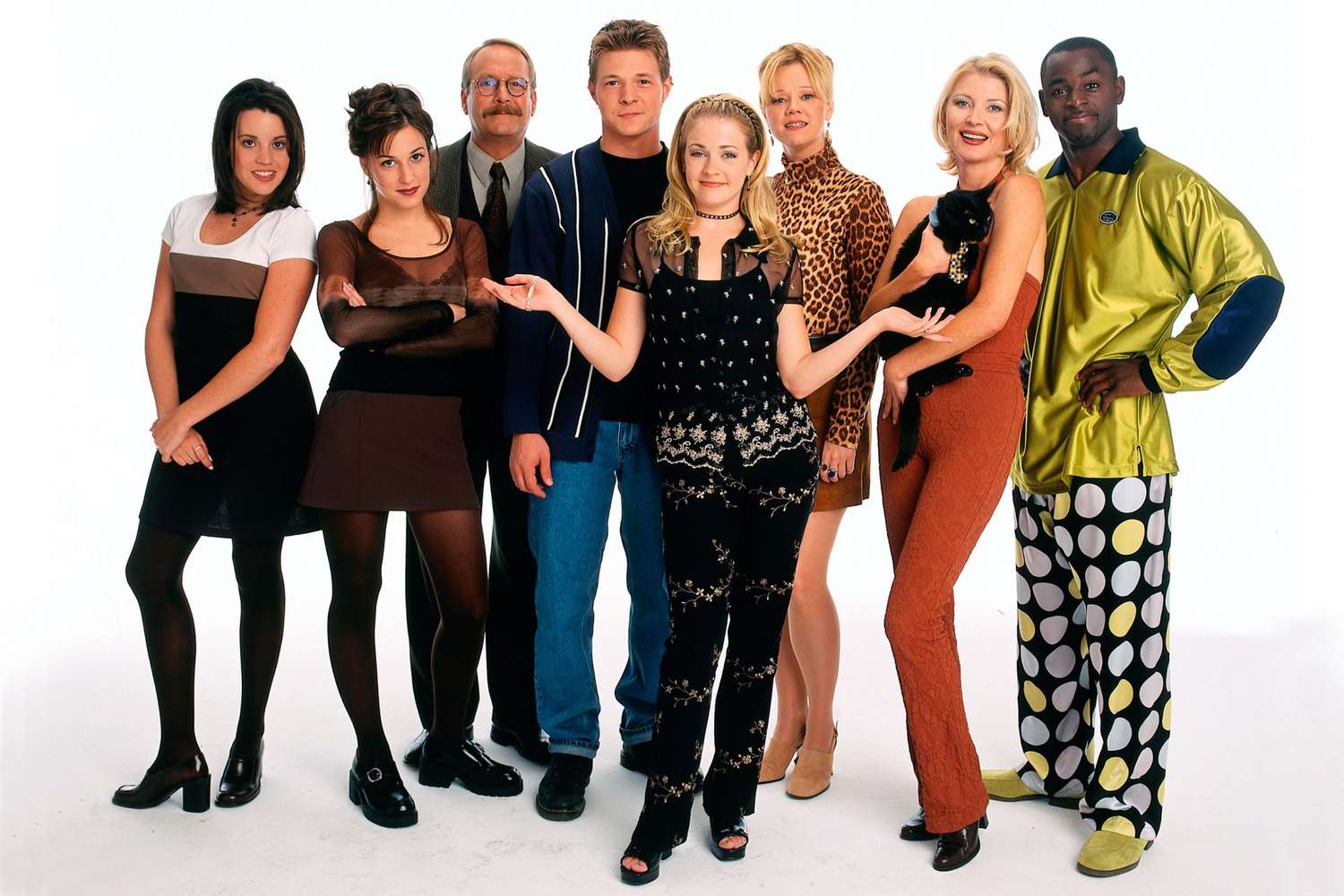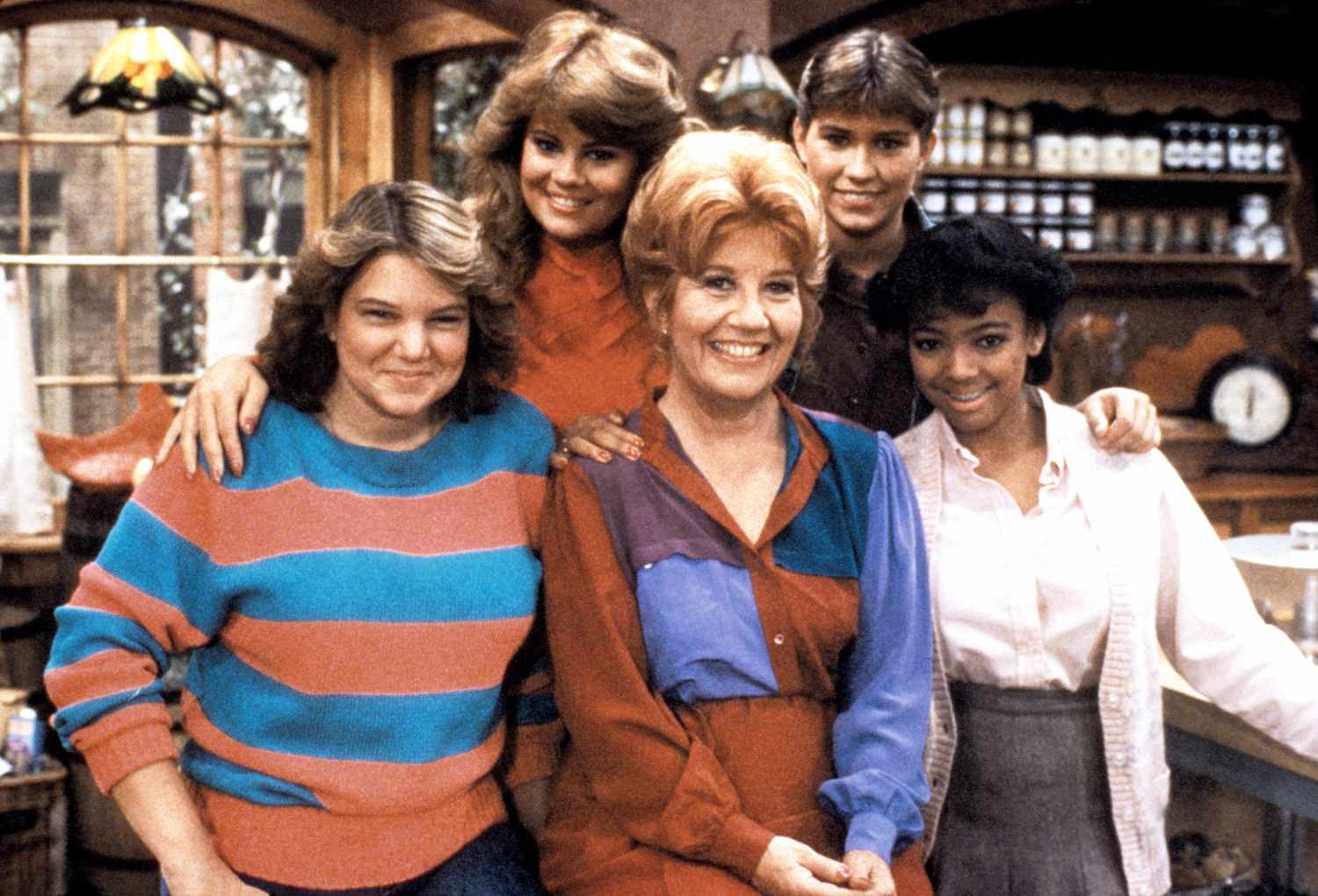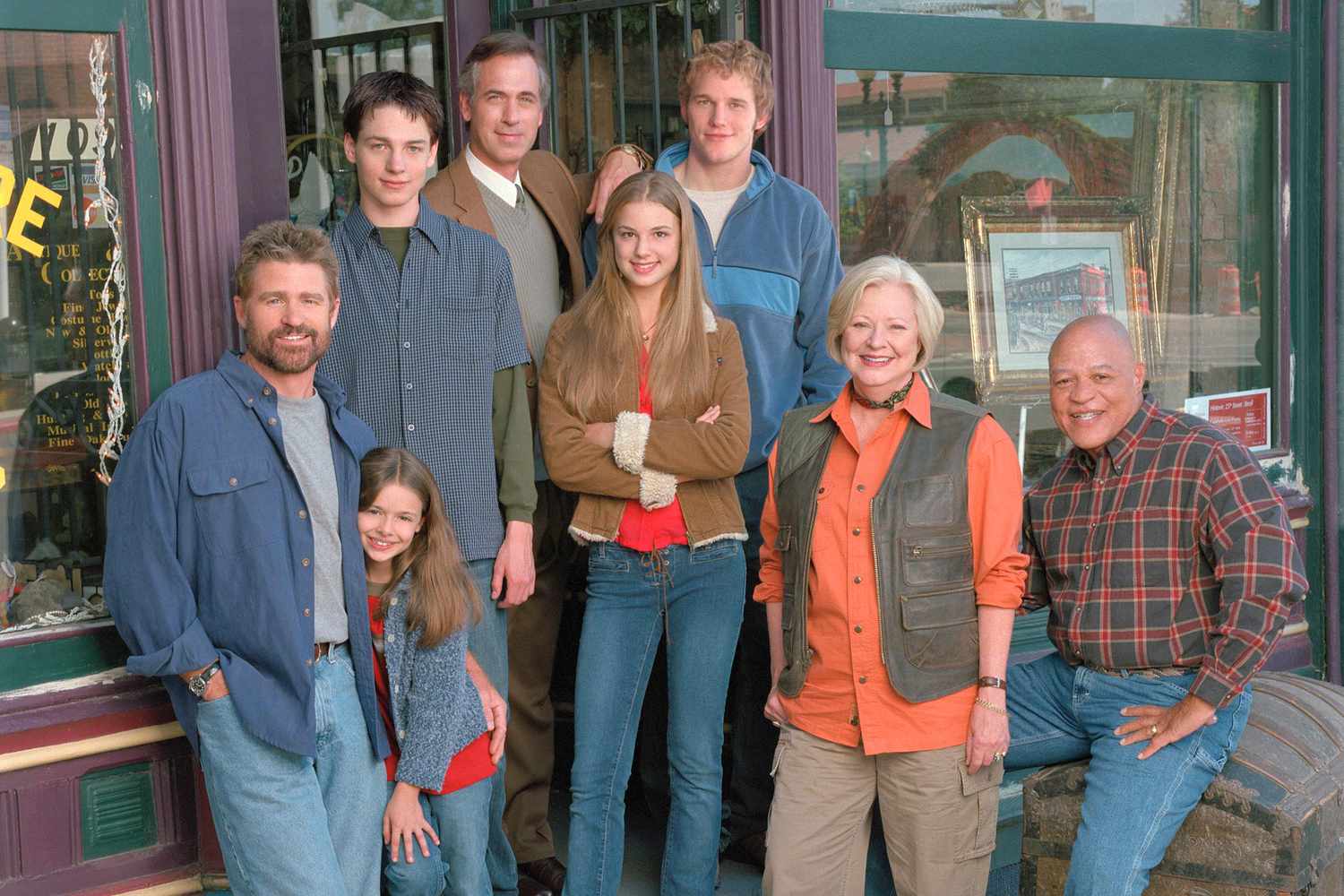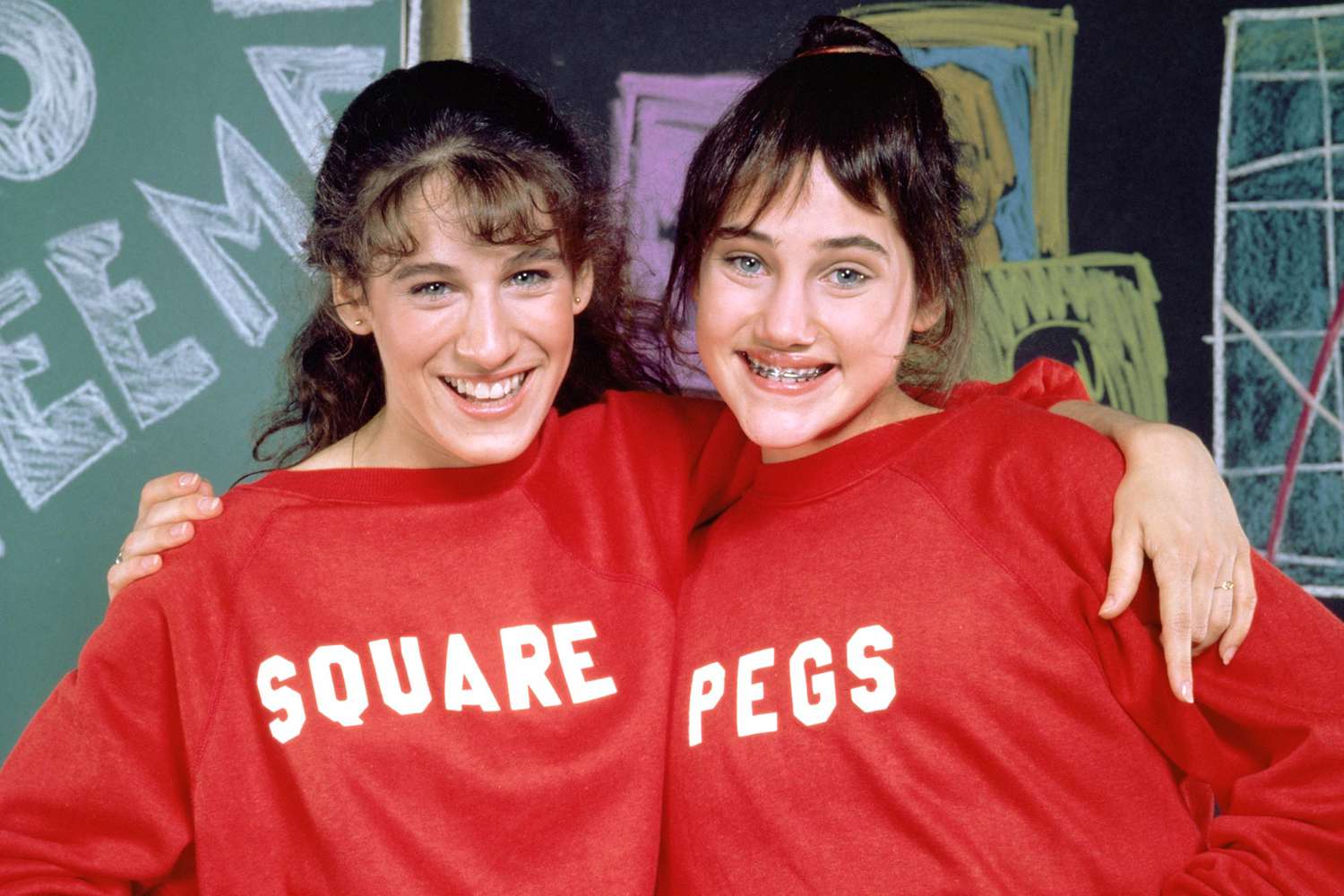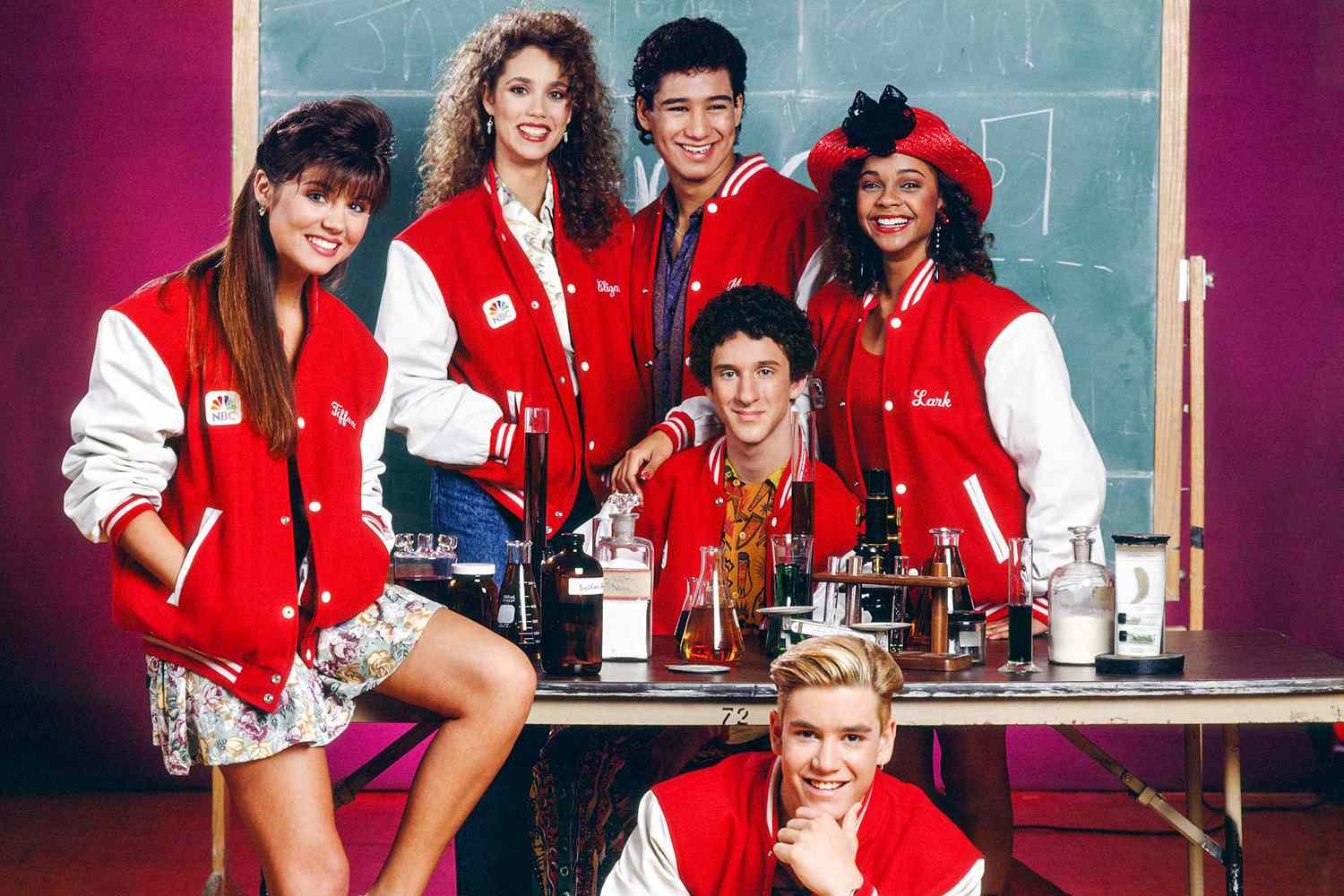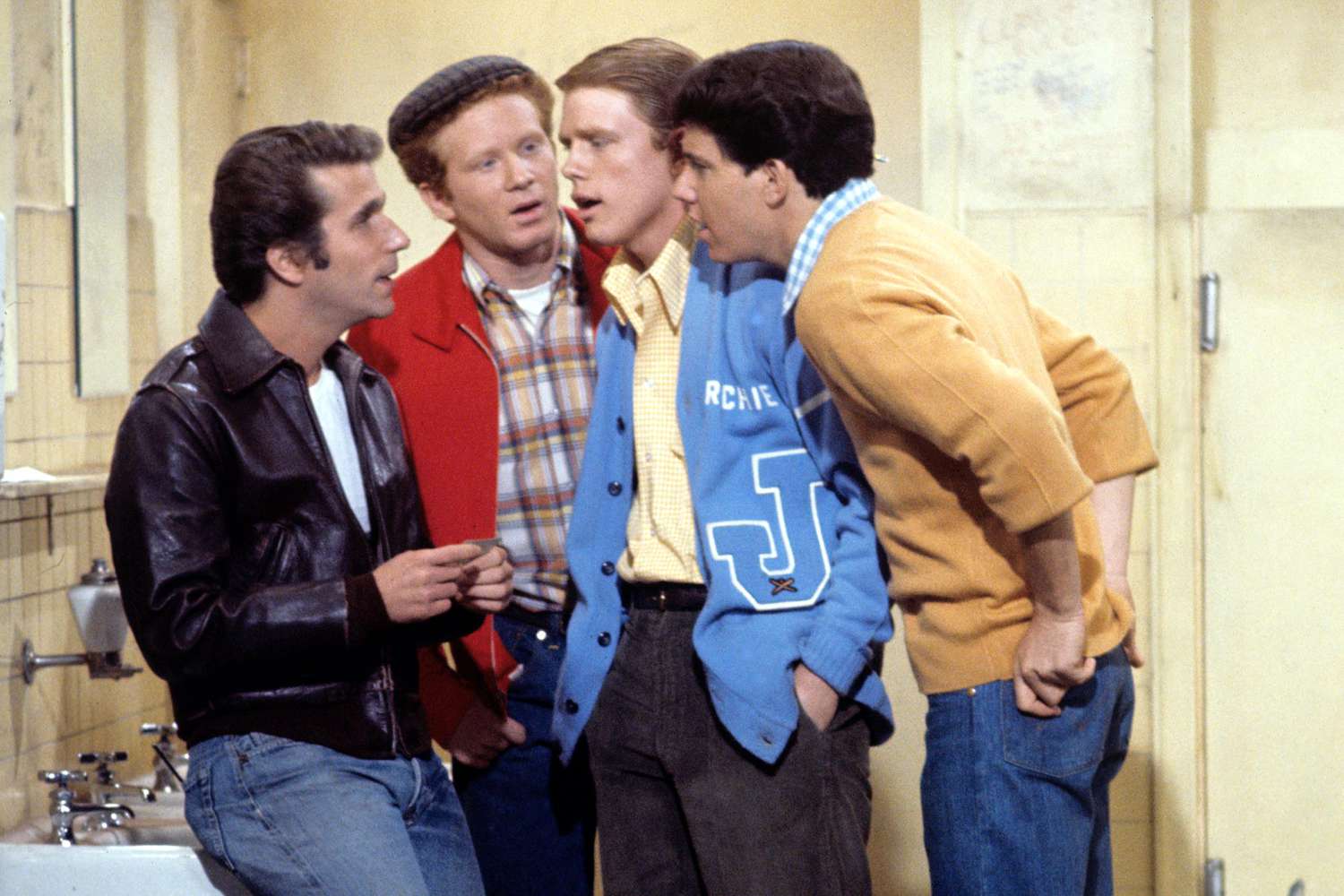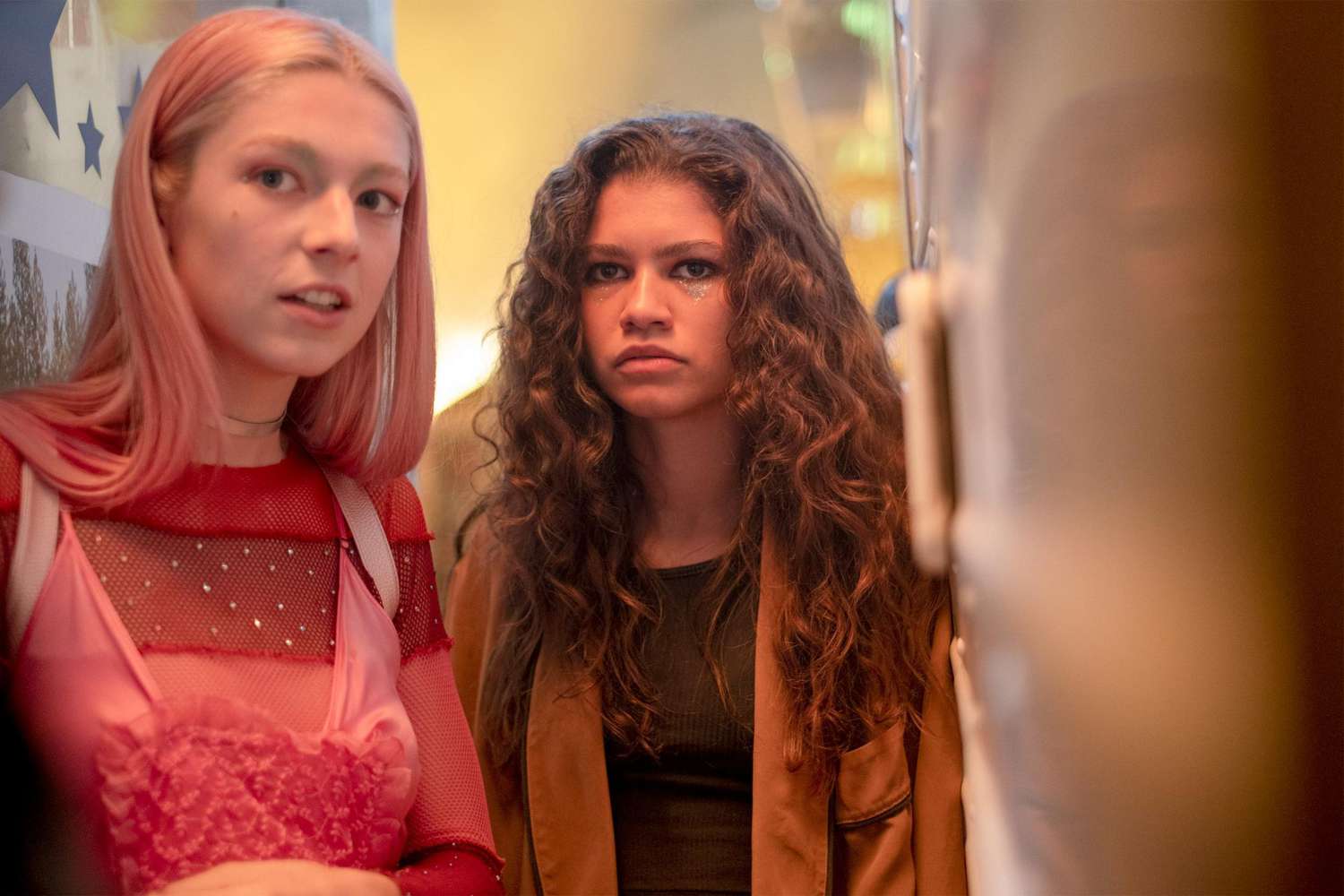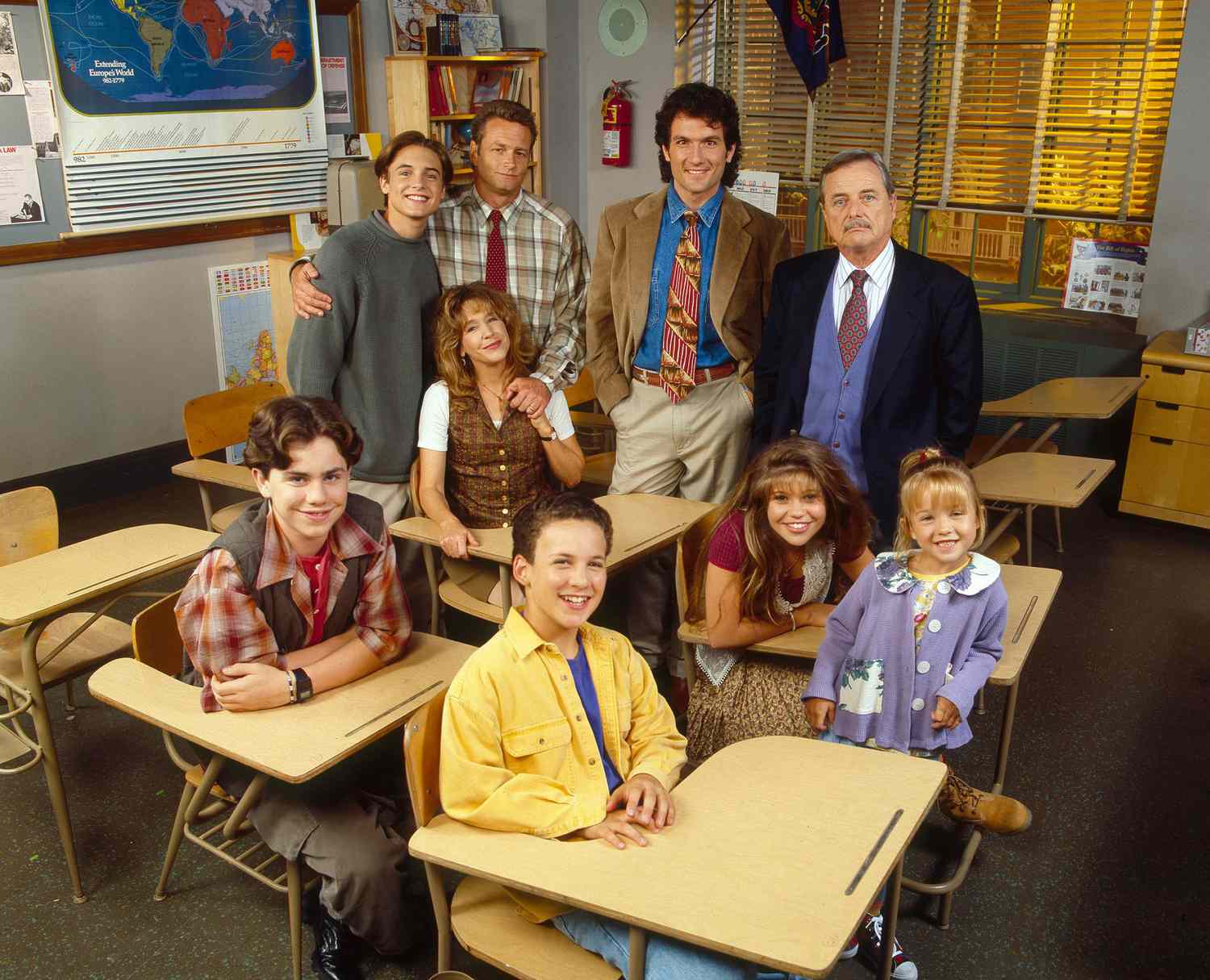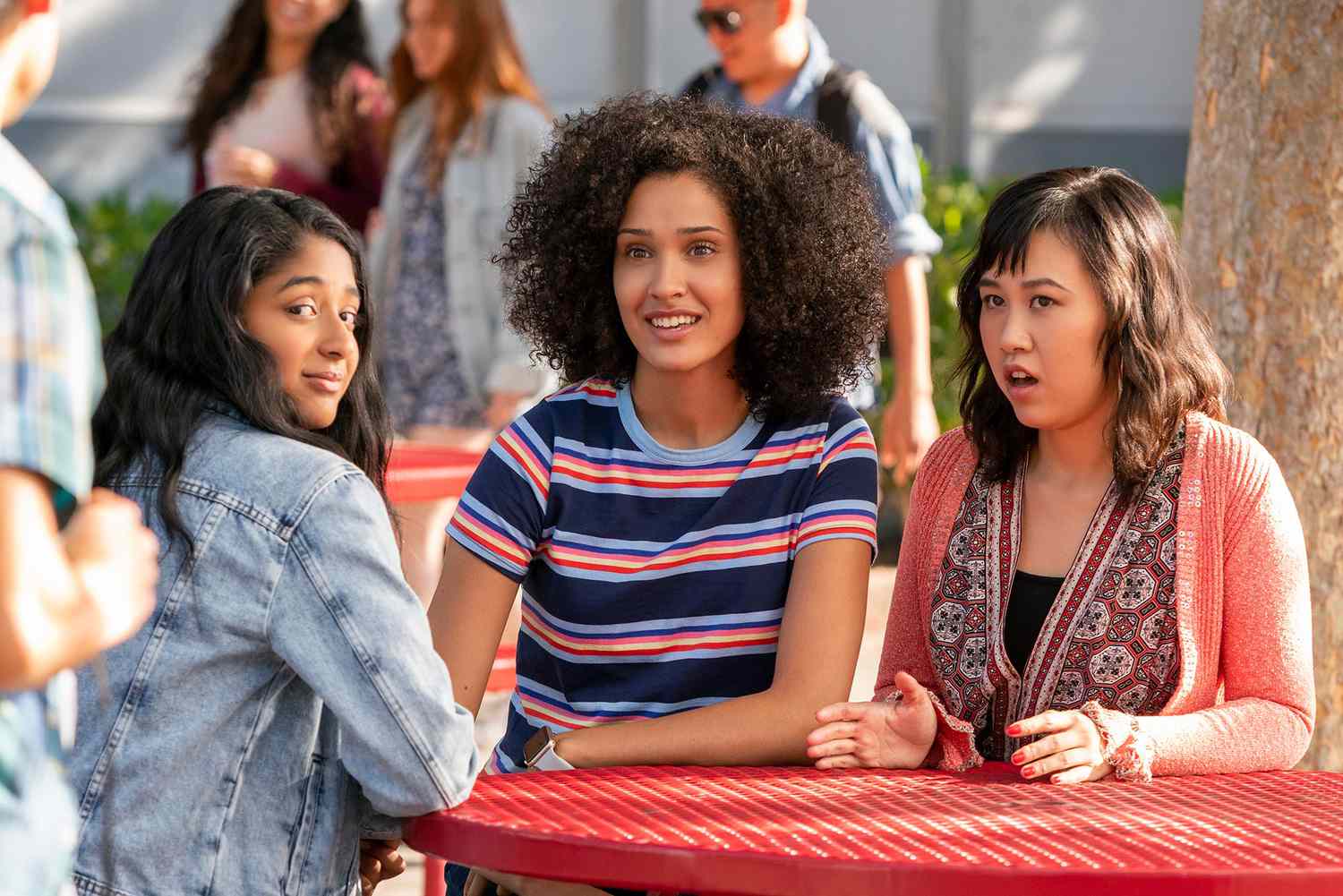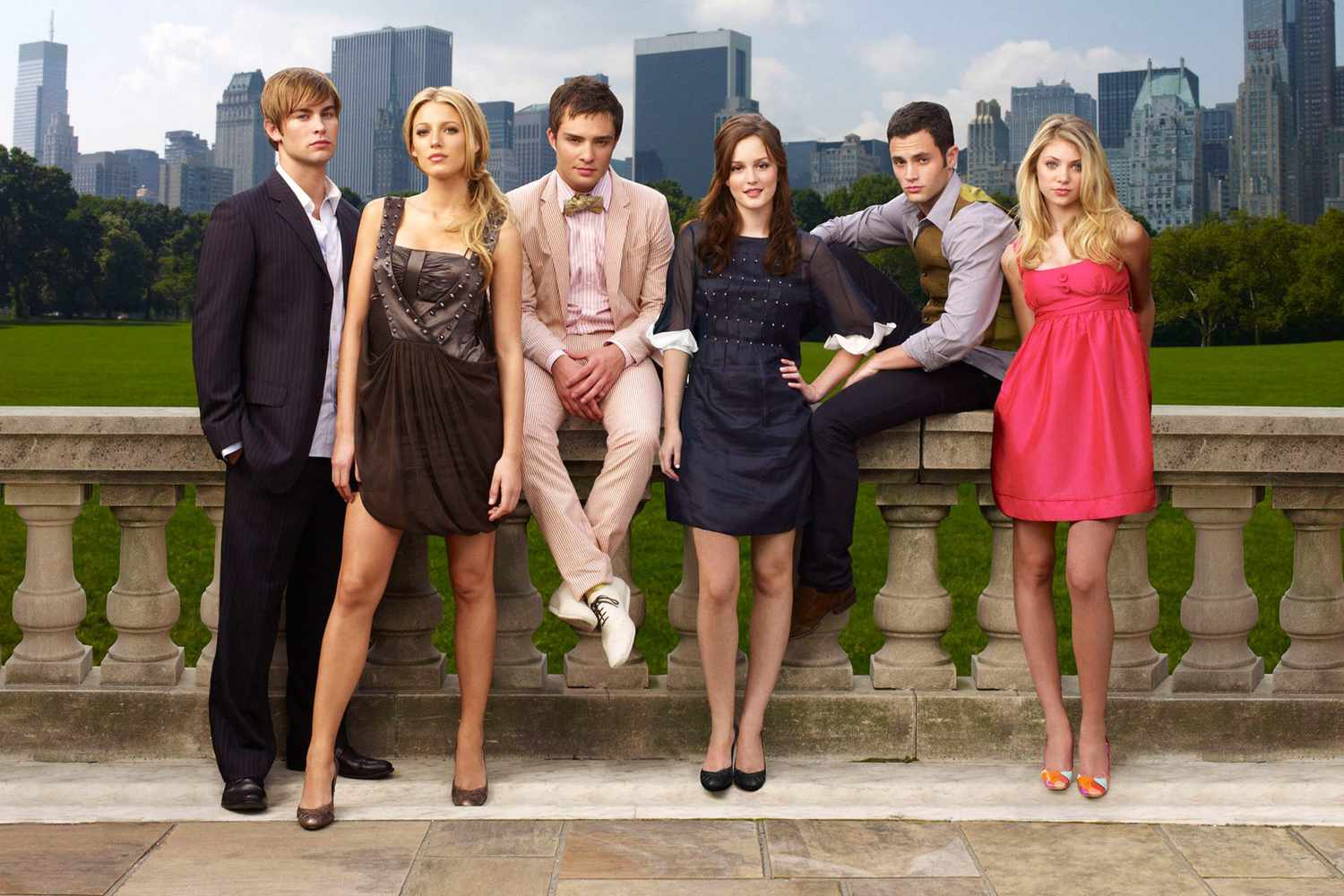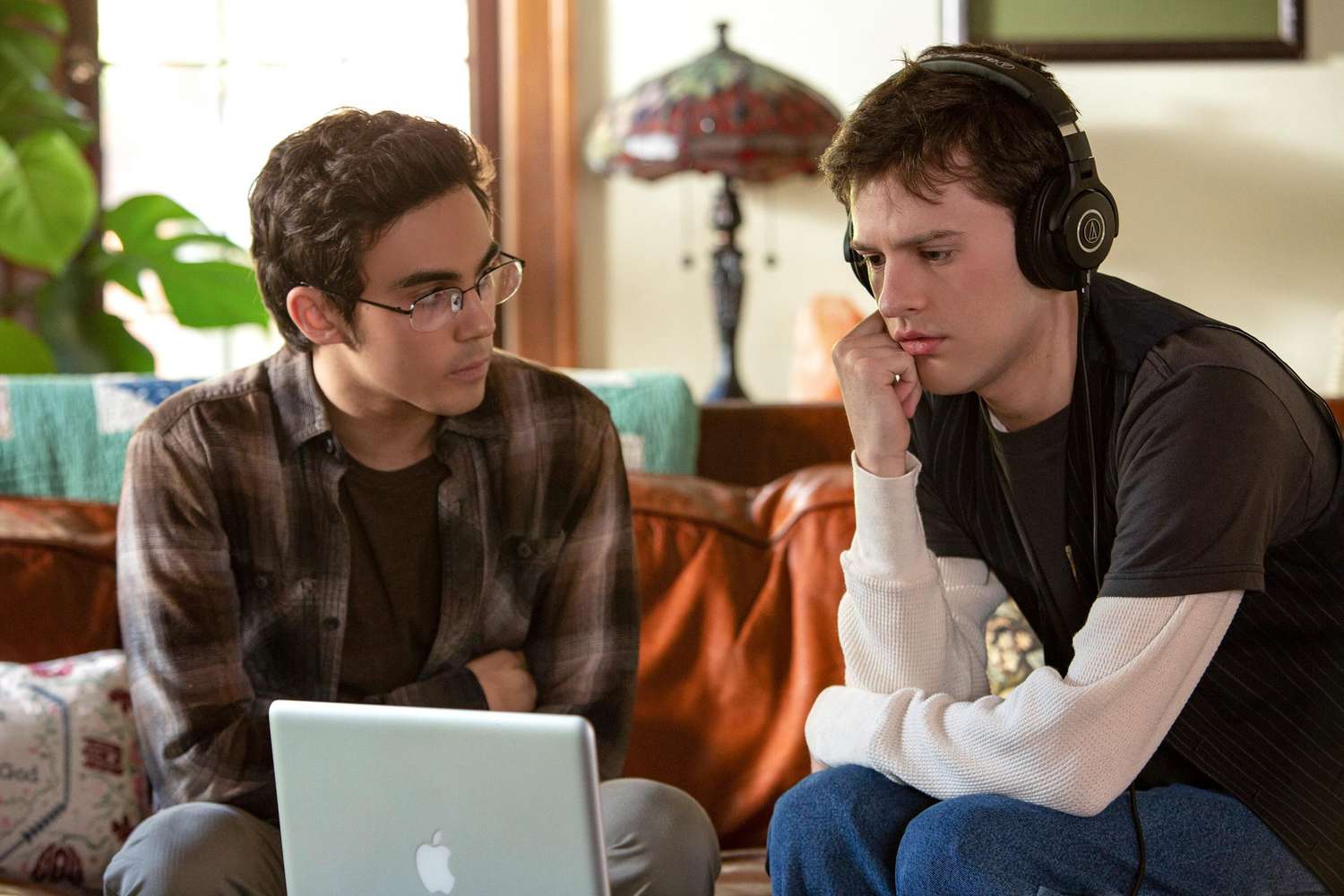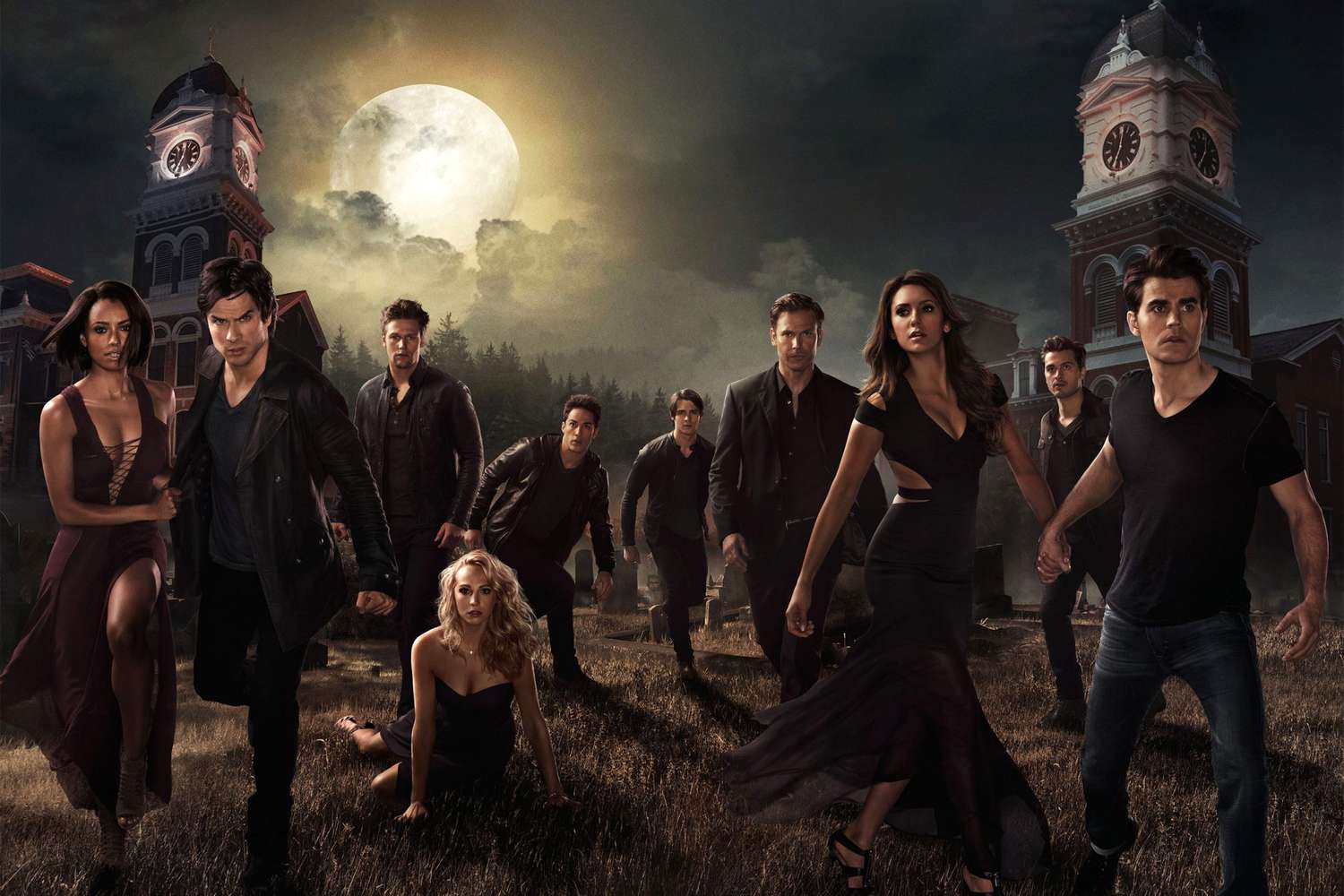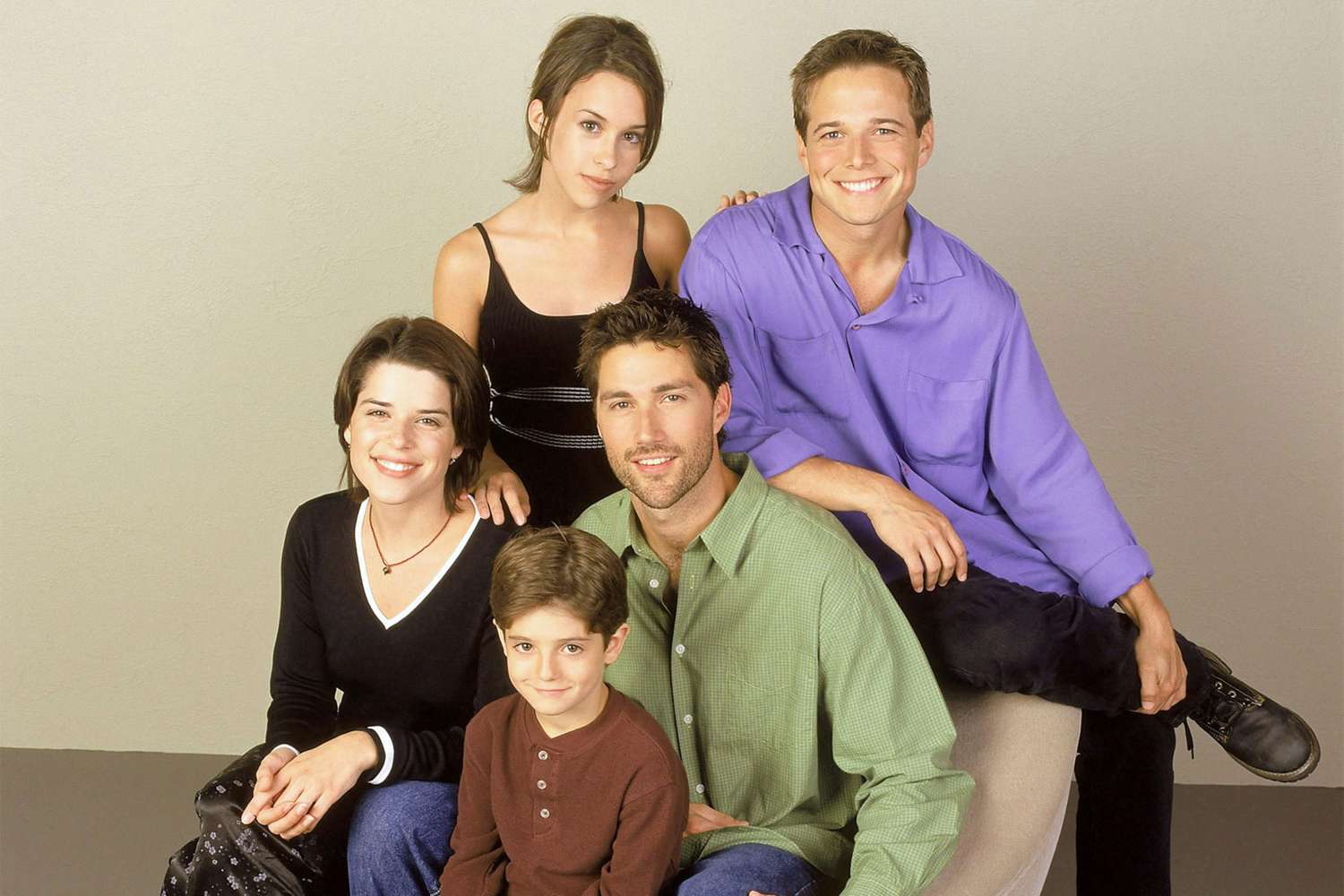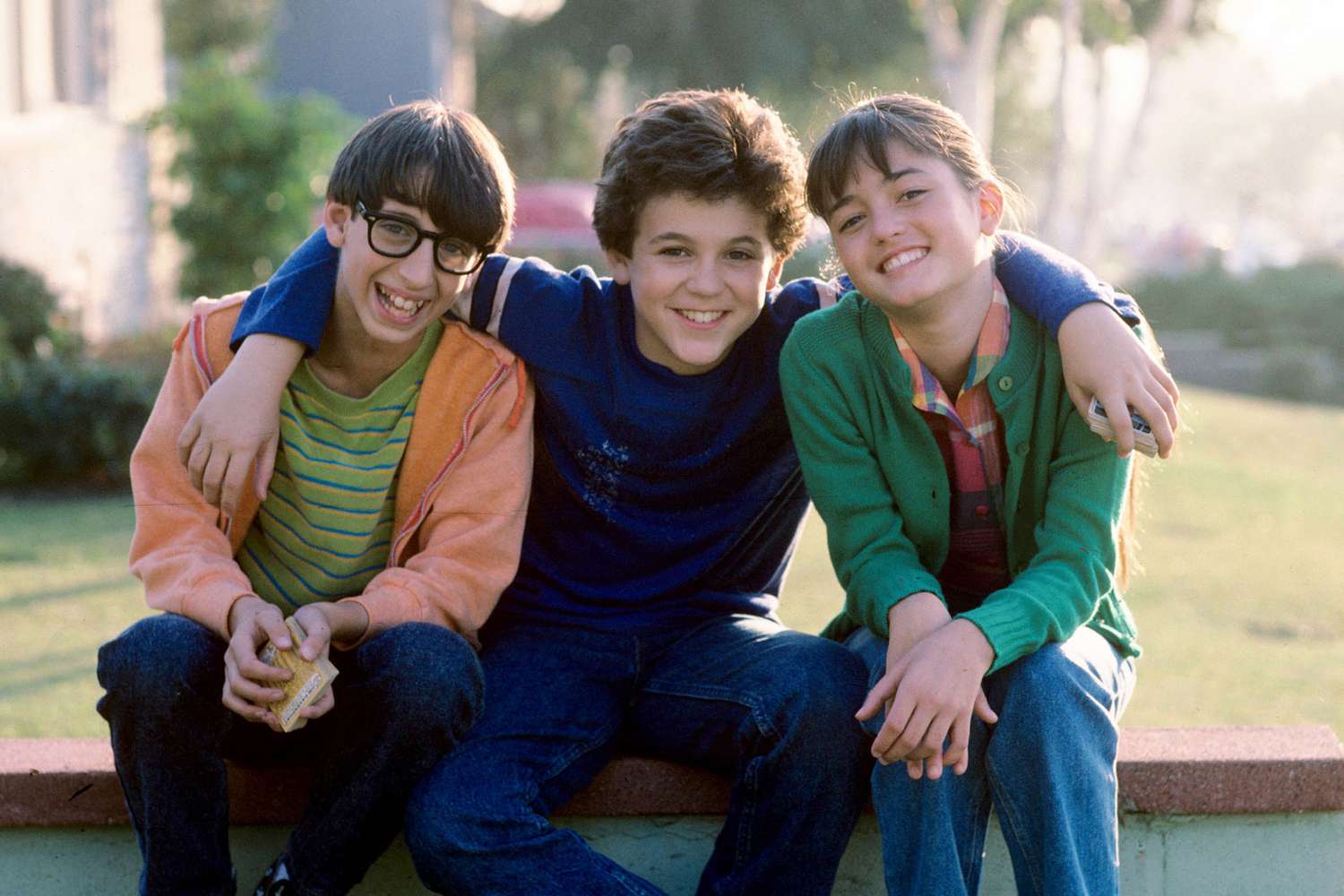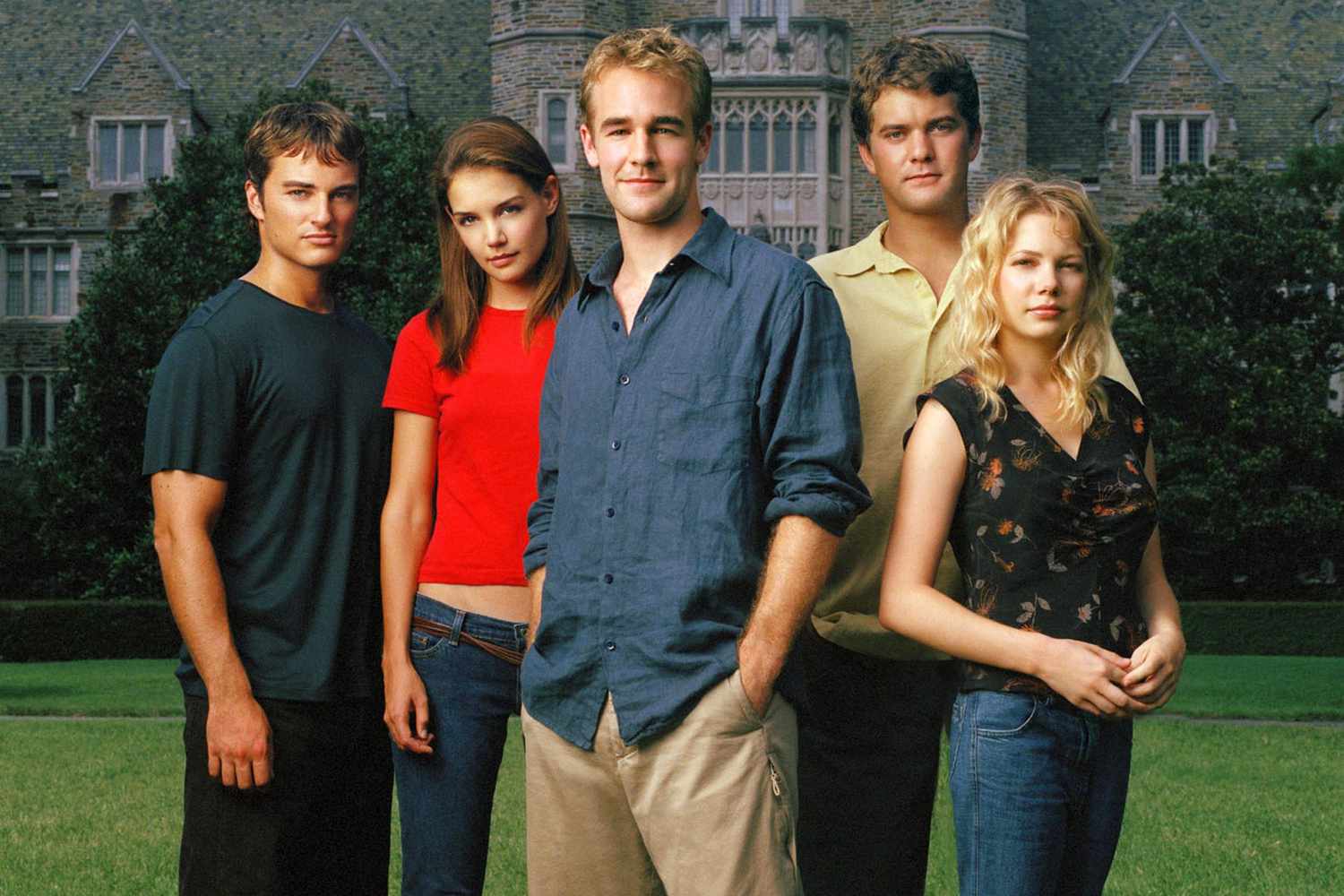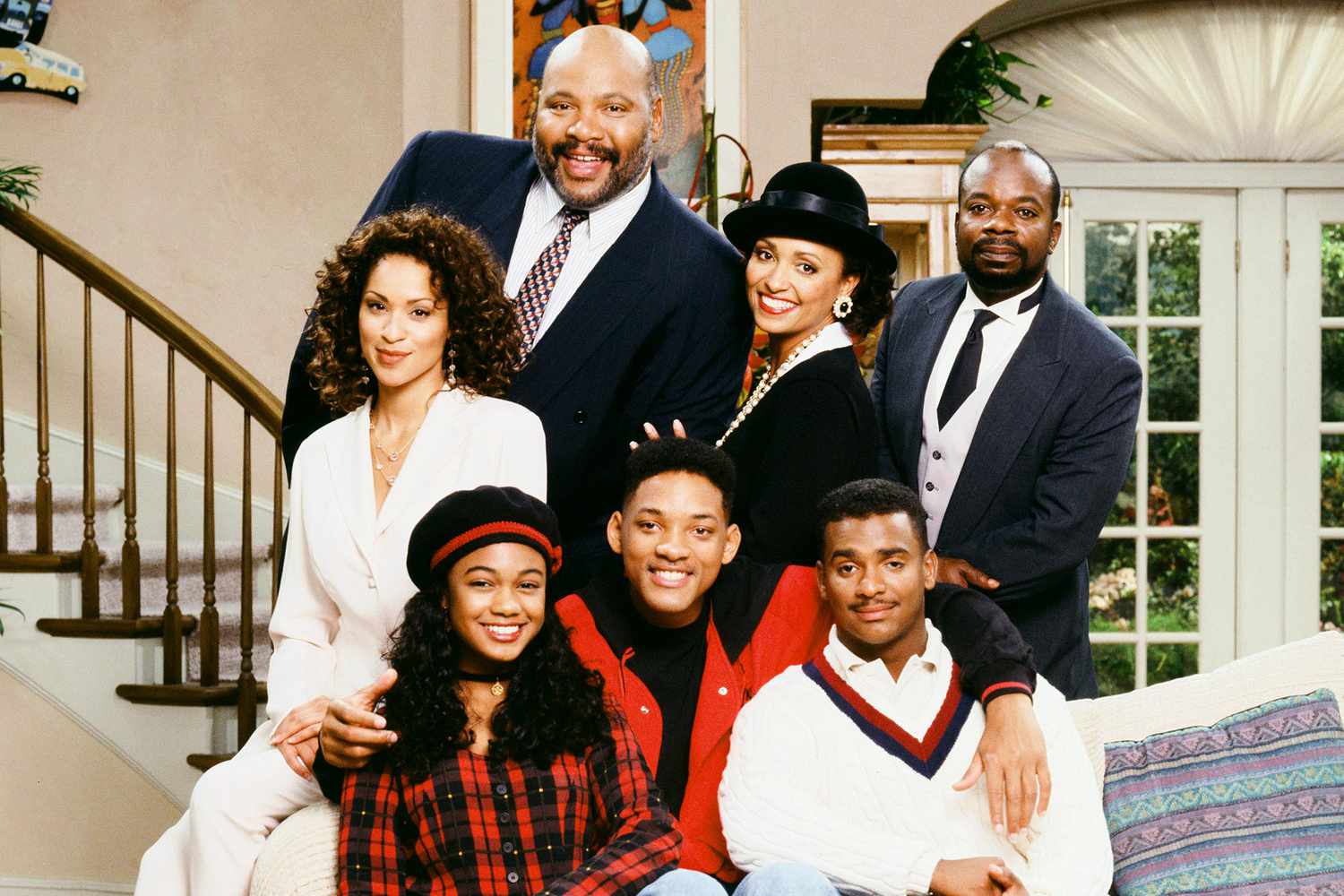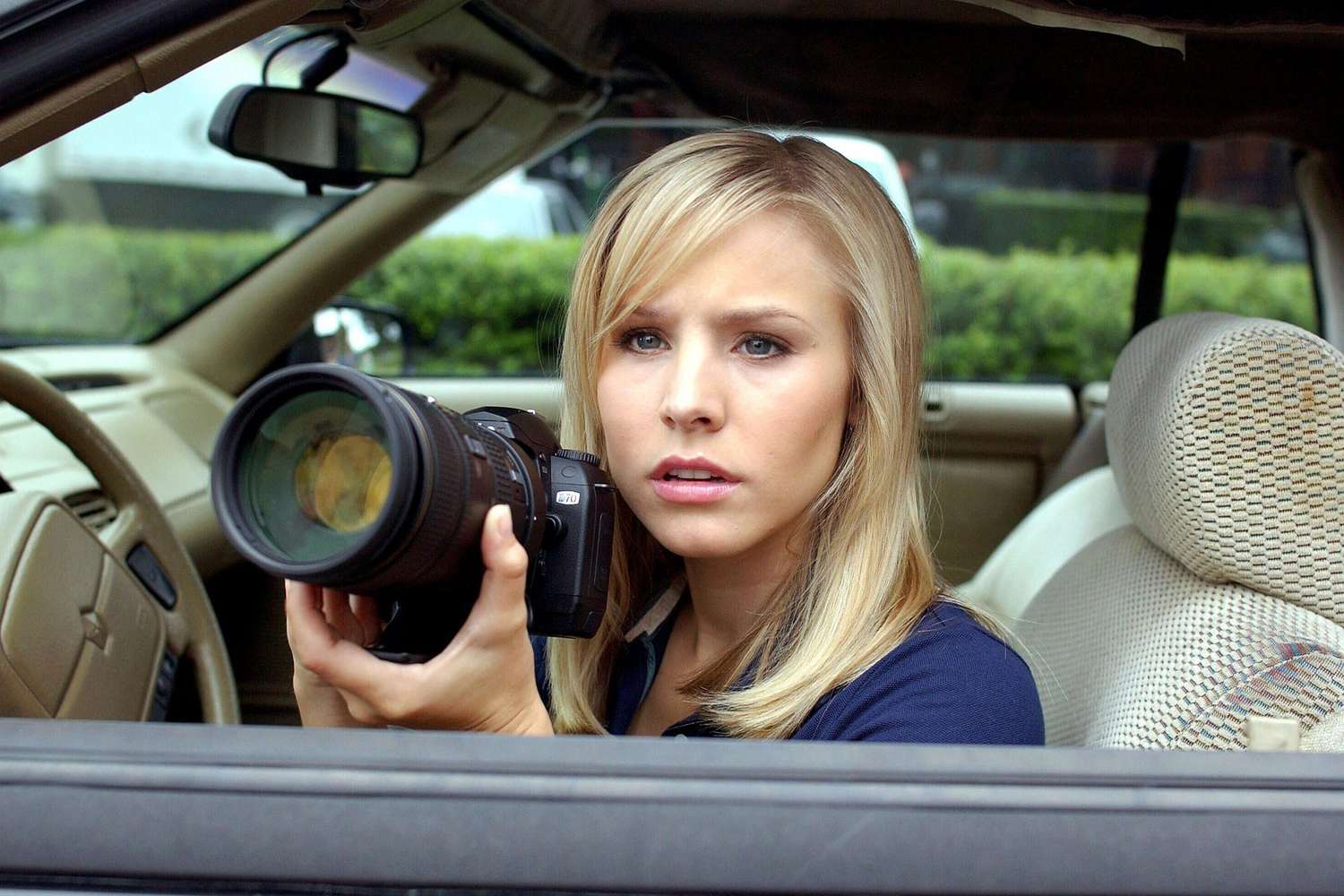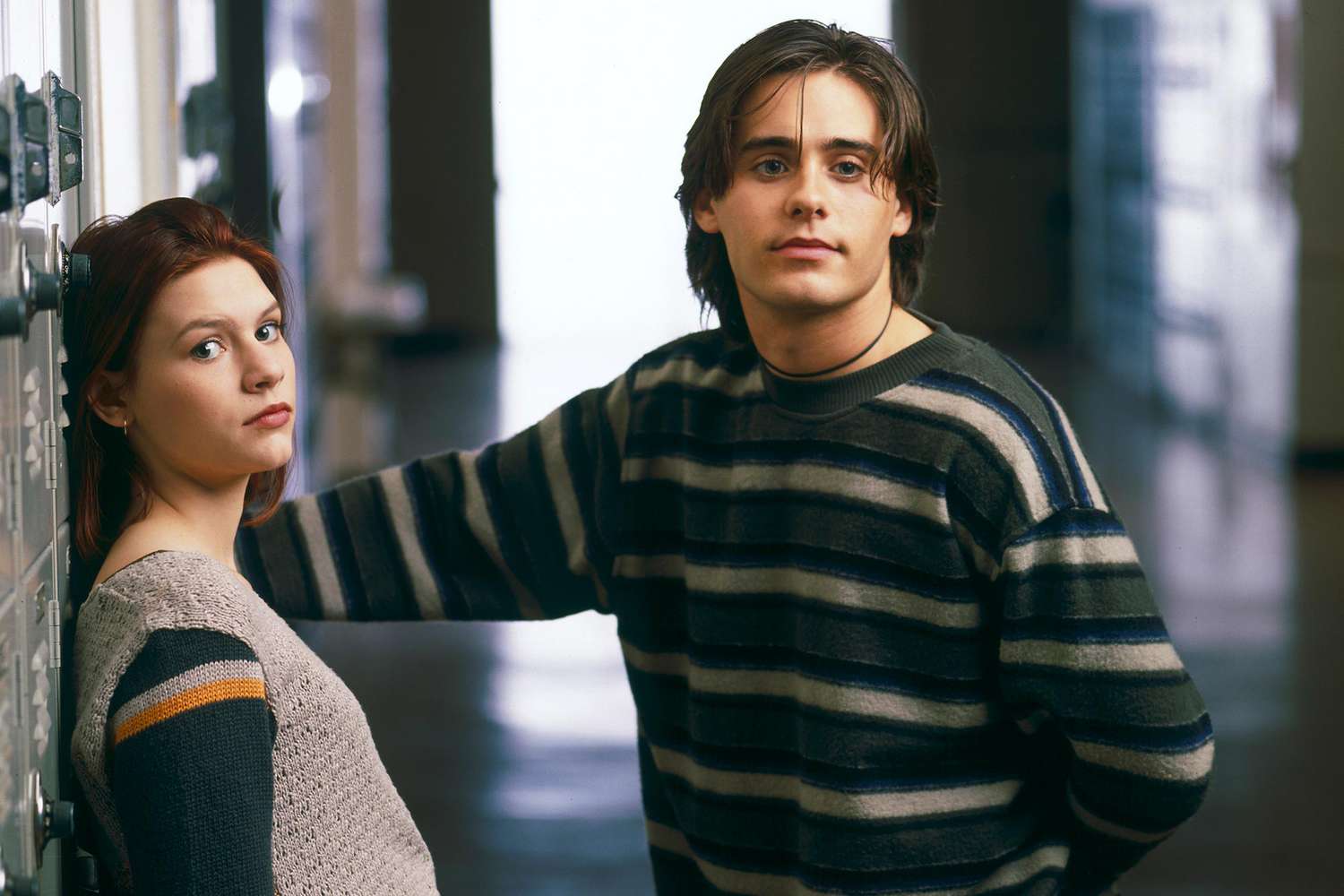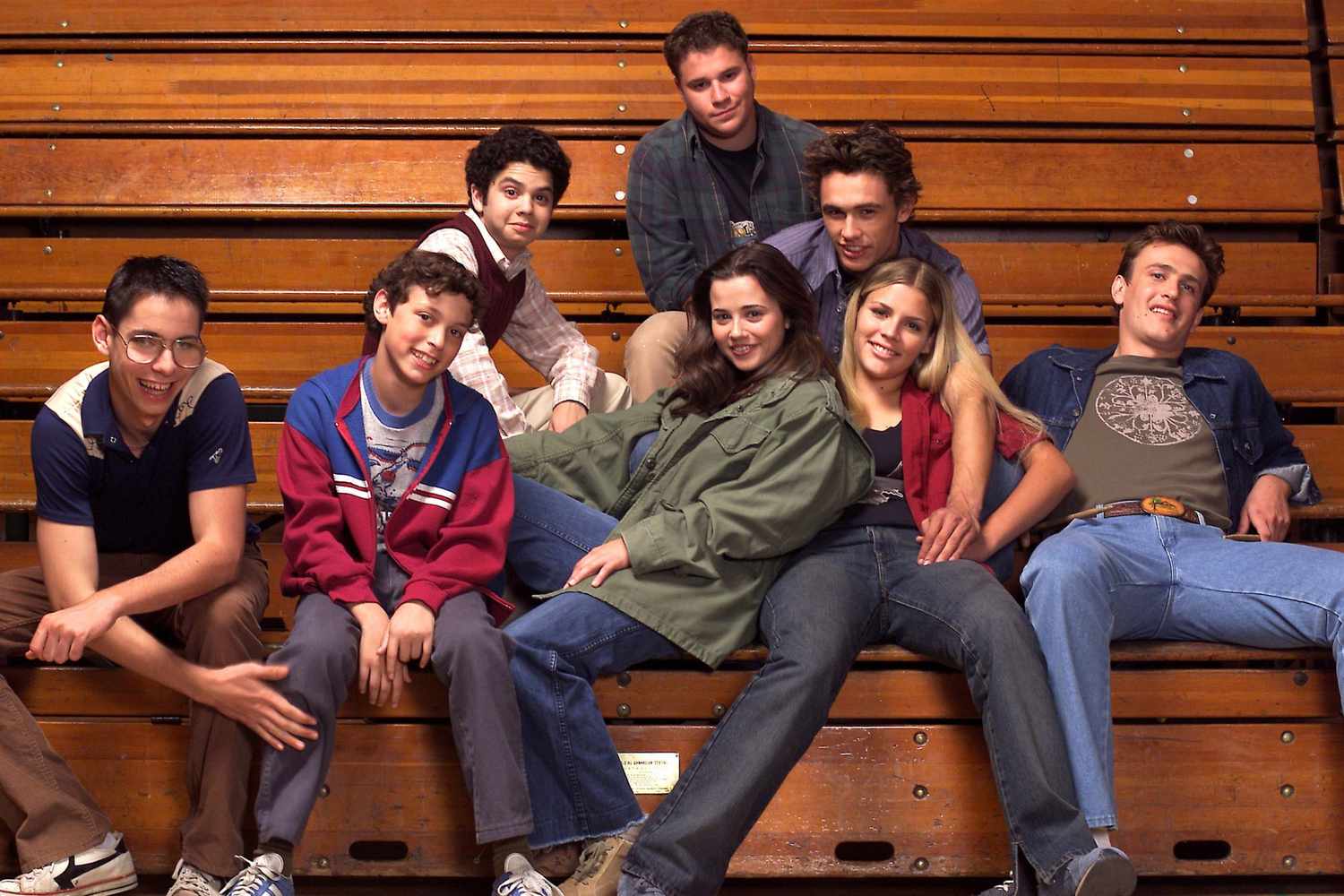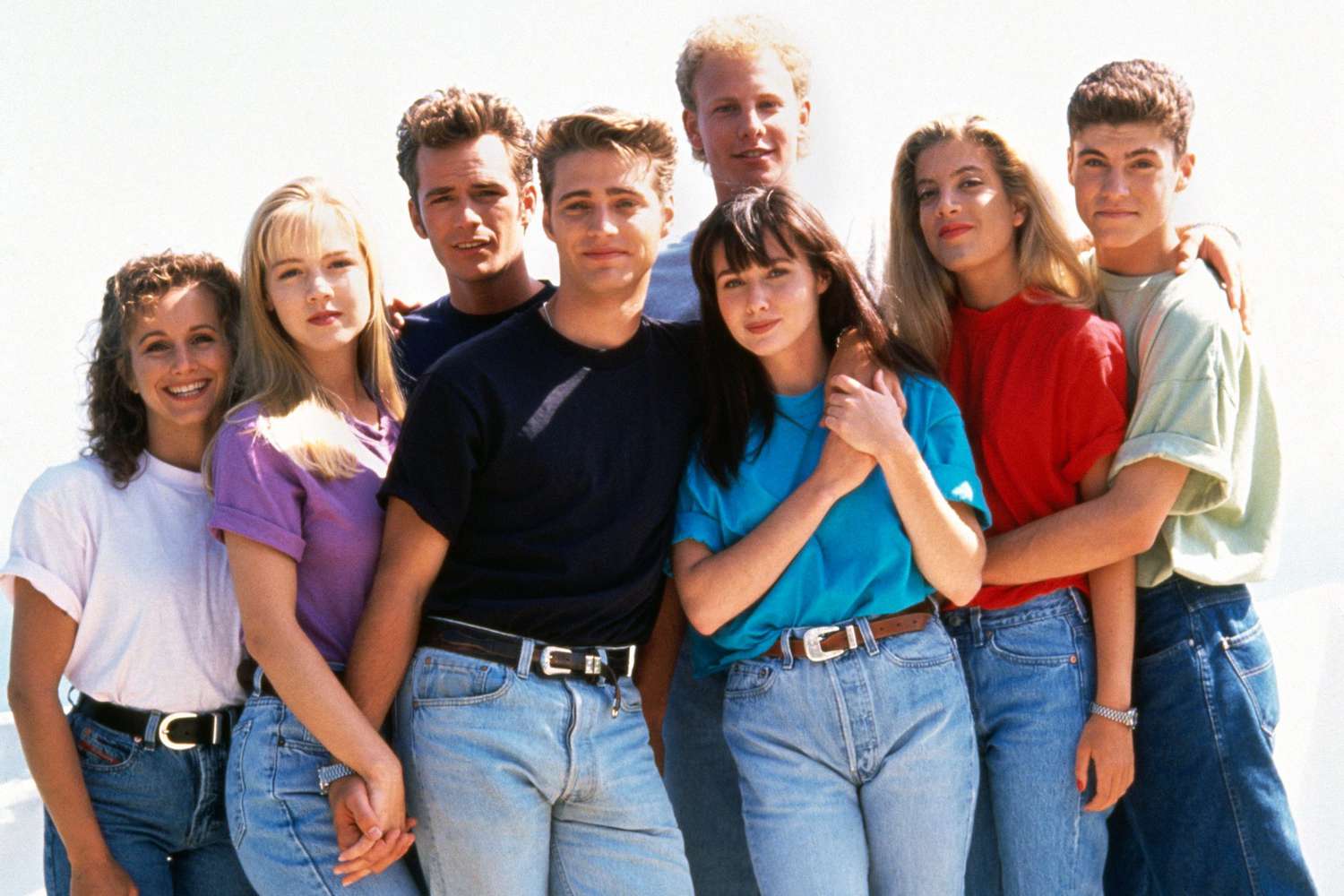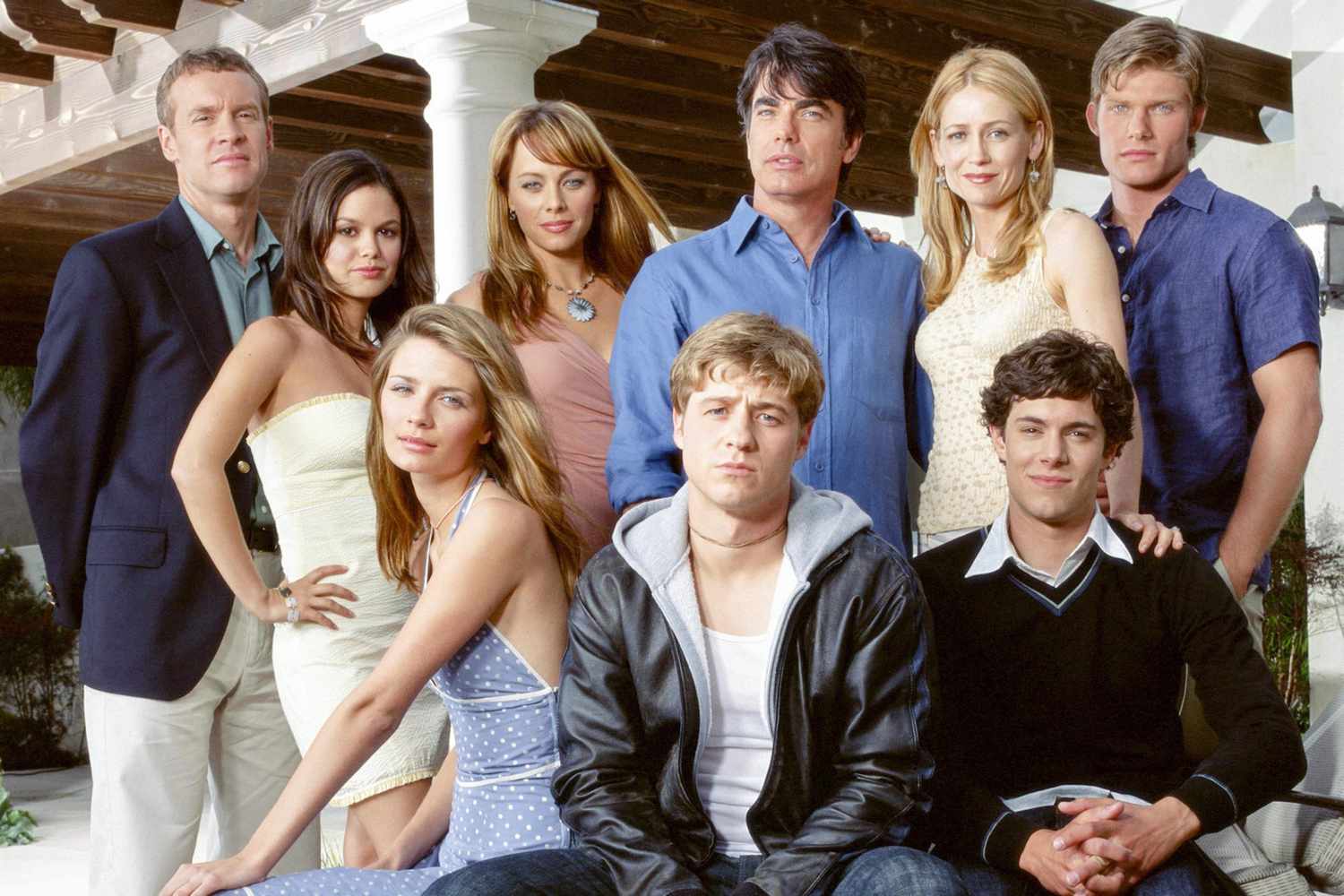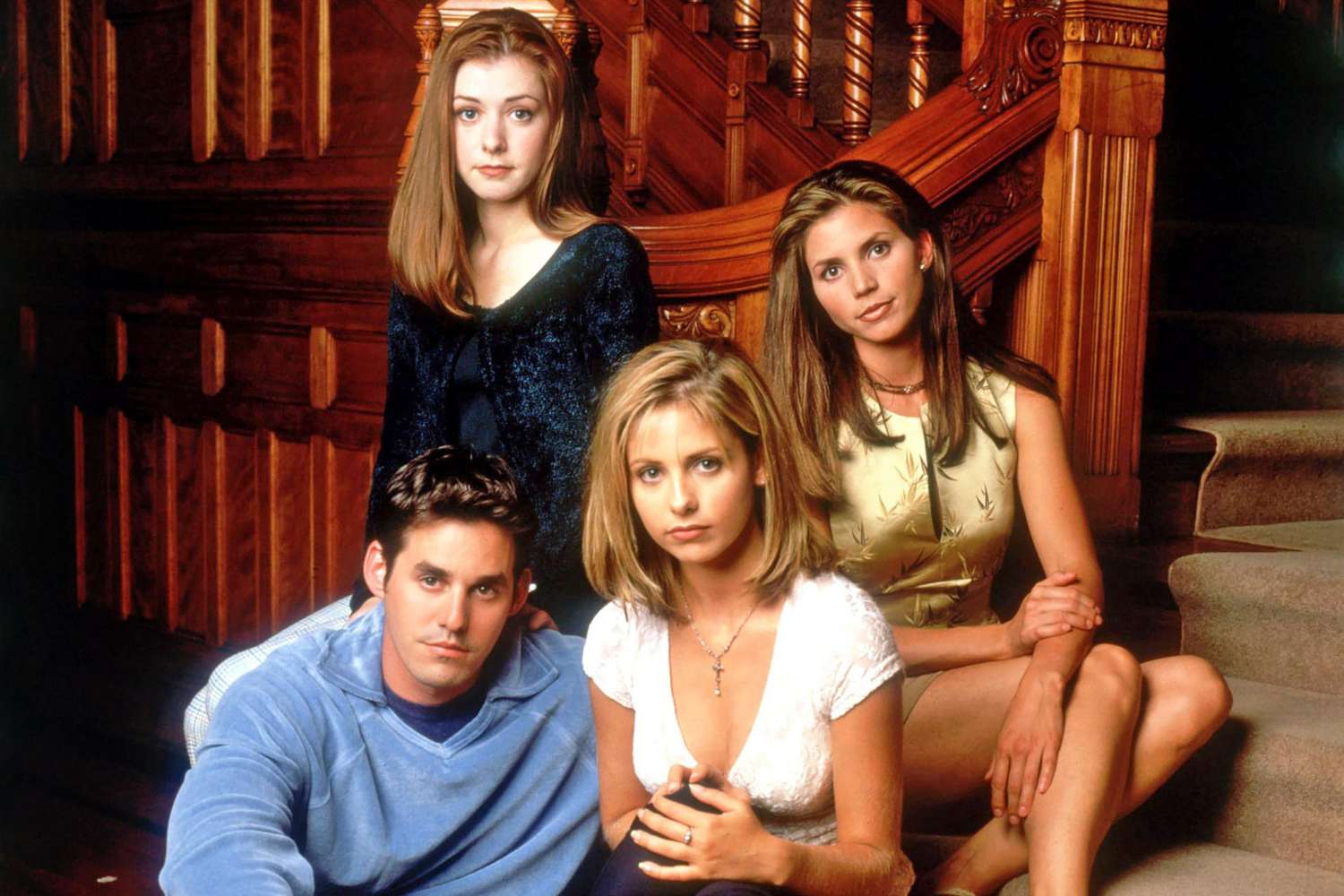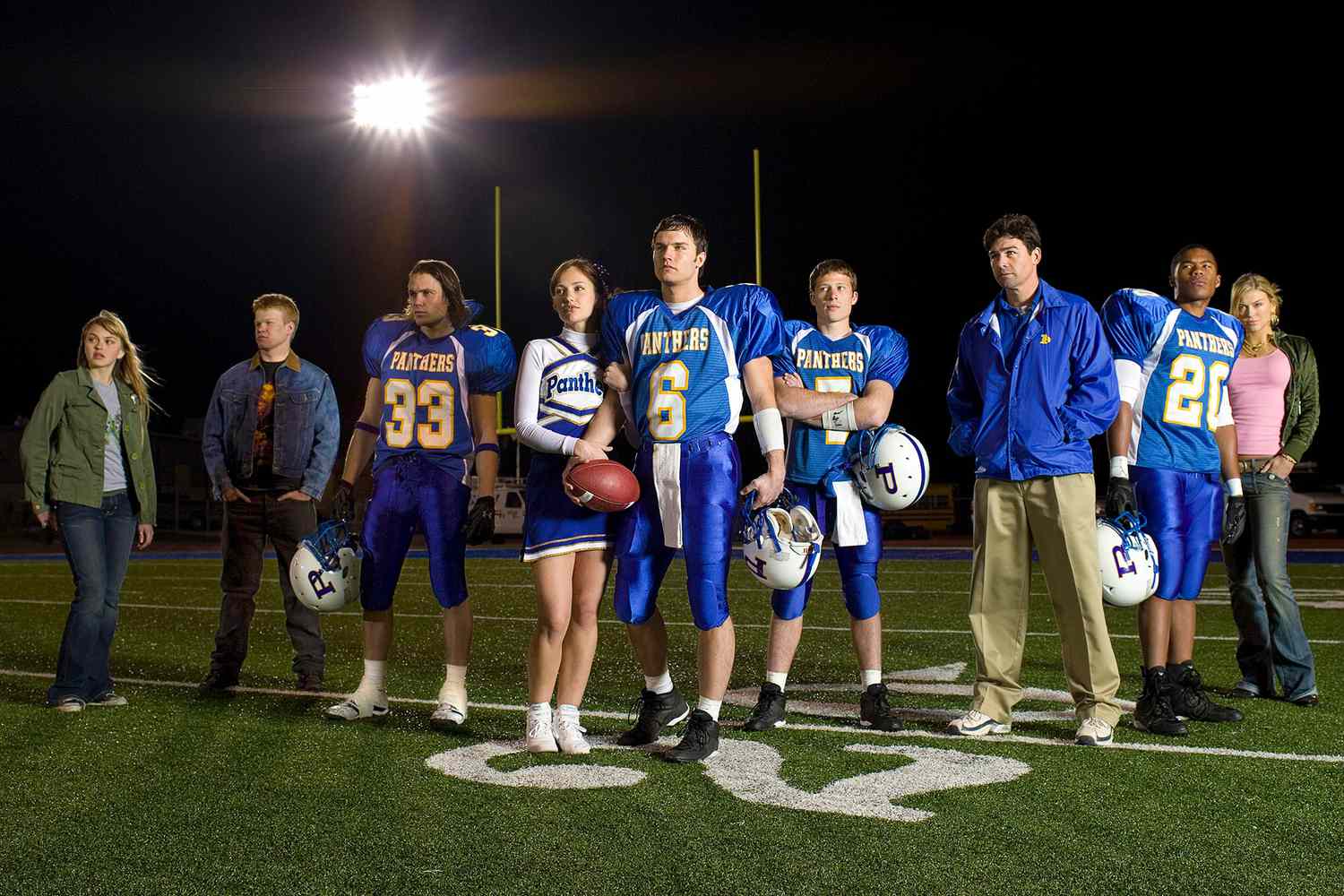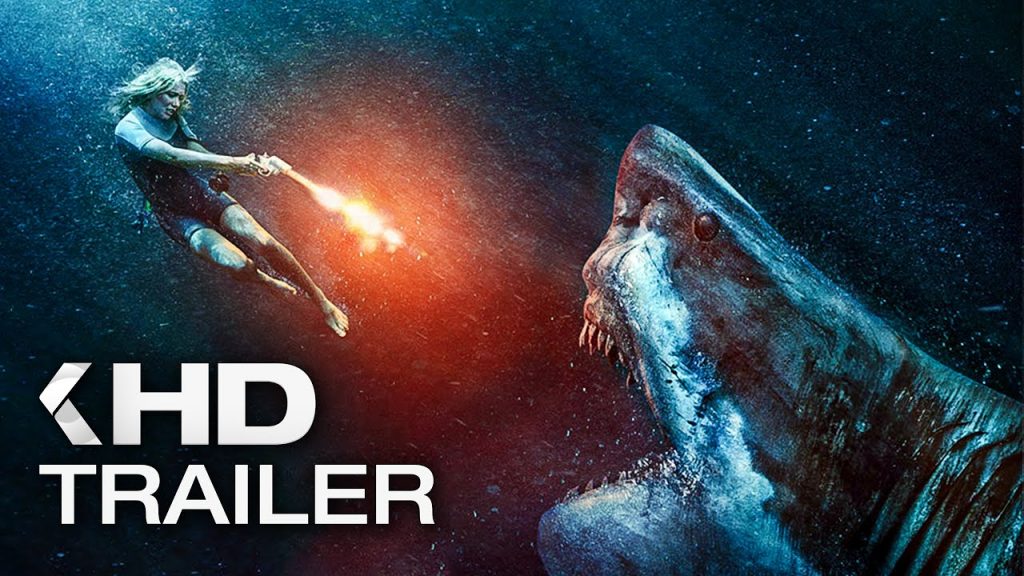The teen years are both the best and the worst. You’re experiencing so many firsts — first love, first real friendship, first time driving a car — as your whole future sits in front of you. But you’re also trying to piece together who you are while feeling all the things, navigating the horror that is other teens, and then there’s homework. And yet, the same reasons why the teen years are so complicated to live through are why they make for such dramatic, compelling television.
To kick off EW’s I Want My Teen TV series — during which we’ll bring you new content all summer long — we’ve ranked the 50 best teen television shows of all time. Before you start telling us all the reasons we’re wrong, let us lay out our guidelines for how we defined a “teen show.”
We chose to include shows that prominently feature characters between the ages of 13 and 19 and tackle what we deem as “teen issues.” That means you’ll see a bit of middle school on this list, and a bit of college. It also means you’ll see shows that focus a lot on the parents, such as Friday Night Lights or Gilmore Girls. One thing you won’t see? Anything we felt classified more as a “family show,” with much of the drama taking place inside the family unit and therefore, inside the home. (Think 7th Heaven and Blossom.) Admittedly, a couple of these shows toe the “family show” line — we’re looking at you, Fresh Prince and Party of Five — but you’ll find all of our reasonings in the blurbs below.
Credit:
John O Flexor/Netflix
(Netflix, 2018) A motley crew of Black and brown teens are searching for hidden treasure and themselves in Netflix’s On My Block, a much-needed series centering underserved communities whose high school experience is often relegated to the background. At the center of the L.A.-based tale is Monse (Sierra Capri) and her crush Cesar (Diego Tinoco), two kids from the same inner-city neighborhood who find love amid gang wars and family trauma. It’s definitely not all doom and gloom, especially when fully immersed in their wild adventures are friends Jamal (Brett Gray), Ruby (Jason Genao), and Jasmine (Jessica Marie Garcia). But a mysterious character named Chivo (Emilio Rivera) is often lurking around and he has homies of his own that rival the teen squad. As literal ceramic gnomes (known as gnomies), it’s easy to dismiss them but it’s worth noting how they’re never too far away from the mayhem. —Rosy Cordero
Credit:
Everett Collection
(E4, 2007) Skins dared to be bold. Over three generations of characters, the British series provided a new look at the lives of teenagers. It showed viewers a slice of life in Bristol, a grittier tale compared to other stories about young people. Fans will remember when Chris is taken away too soon; Naomi and Emily bravely admitting how they feel about each other, and the many of the show’s powerful arcs and moments. Although some had issues with the sex scenes and partying lifestyle displayed, Skins often showed the consequences of risky behavior. What that doesn’t take into consideration is the poignant storylines and how well it tackled controversial topics. From bullying to adolescent sexuality, mental illness, and more, Skins never shied away from the subject matter it delved into. In the end, Skins‘ legacy is in its stars, which includes Daniel Kaluuya, Hannah Murray, Dev Patel, and Jack O’Connell, who went on to have incredible careers. —Alamin Yohannes
Credit:
Walt Disney Television via Getty Images
(ABC, 1965) Don’t be a square. Gidget might be the oldest entry on this list, but making surfing and hanging out at the beach a priority while chasing boys under the golden California sun? With her phone line and lots of sass, Gidget (Sally Field) feels just as relatable today as a precocious teen who tries to explain the mysteries of youth to her bewildered dad (Don Porter), older sister Anne (Betty Conner), and hapless brother-in-law John (Pete Duel). Gidget and her father share a real warmth for each other, underpinned by strong performances by both Porter and Field in what would be a star turn early in her career. ABC may have prematurely axed Gidget after one season, but the suits with the roots knew they needed more Sally Field on TV, and quickly booked her on a show (The Flying Nun) with fewer bikinis and “sexteens” as Anne accidentally calls Gidget’s beach bum buddies. —Sarah Sprague
(Netflix, 2017) This fantastically crass animated series may be populated by hormone monsters, talking pubic hair, and the ghost of Duke Ellington, but its vision of puberty is disarmingly real. Somehow combining gross-out period jokes and insightful lessons on sexuality, Big Mouth feels a bit like the funniest, filthiest sex ed class you never took, following preteen friends Nick (Nick Kroll), Andrew (John Mulaney), Jessi (Jessi Klein), and Missy (previously Jenny Slate, now Ayo Edebiri) as they learn to navigate new relationships and their changing bodies. Add in Kroll and Maya Rudolph as the voices of the aforementioned hormone monsters, and you’ve got one delightfully gross ode to the weirdness of growing up. —Devan Coggan
(Hulu, 2019) Hulu’s surreal sitcom was only included in our ranking after much conversation about when, precisely, a kid becomes a teenager. But that ambiguity cuts to the emotionally delicate core of this seventh-grade saga. Co-creators Anna Konkle and Maya Erskine are grown-up performers playing fictionalized versions of their junior-high selves. The characters Anna and Maya are best friends caught together in the nightmare landscape between childhood and adulthood: crushes, changing bodies, R-rated movies, an oncoming divorce, the lawless mood of up-all-night sleepovers. Millennials can appreciate how Konkle, Erskine, and fellow co-creator Sam Zvibleman capture every micro-detail of Y2K life. But the stunning leads transcend nostalgia and evoke a palpable edge-of-puberty awkwardness. PEN15 has a dreamy side, but the performances carry a painful realism. By comparison, even some great shows on this list look like twentysomething model mixers. —Darren Franich
(Netflix, 2018) Some teen dramas provide a fantasy: a castle-like campus, complete with Abercrombie & Fitch model-like students and flashy vehicles, like The O.C. and Beverly Hills 90210. Others are steeped in sex, drugs and general disfunction — cough, Euphoria — as kids battle against overwhelming odds to make it to graduation. One is unattainably aspirational, the other an important reflection of many people’s reality. Derry Girls falls into neither category and is excellent because it’s so universally relatable — even if you didn’t attend Catholic school or grow up with your extended family living in your home. The coming-of-age comedy, set in ’90s Derry, Northern Ireland, follows a group of teen girls (and one boy) who are refreshingly average. They’re curious about sex in so far as it’s something on the periphery that they’ll get to, they try to assert their individuality by refusing to wear their blazers to school, and they get excited by pop concerts and fried foods. The show unabashedly explores that in-between part of life that you can’t wait to escape because it just seems so torturous at the time, and instead of glorifying it, reveals it for what it truly is: a necessary mess. —Ruth Kinane
(MTV, 2002) Many teenagers find themselves struggling to live up to their potential, but it makes sense that the problem would be even worse for literal clones of Abraham Lincoln and Mahatma Gandhi. Clone High‘s inventive premise — that the U.S. government secretly cloned every major historical figure they could think of, but then had no idea what to do with these pubescent legends other than stick them in a high school together — only made 13 episodes before the inclusion of Gandhi sparked outrage in India and the animated series was canceled. Even so, that single season survived on YouTube thanks to its absurdist take on teen-culture tropes (such as when Spanish conquistador Ponce de Leon pops up for one episode just so he can die and inspire a Very Special Message about the dangers of littering). No wonder creators Phil Lord and Chris Miller (The Lego Movie, Spider-Man: Into the Spider-Verse) went on to expand the possibilities of 21st century animation. —Christian Holub
Credit:
Ray Mickshaw/The CW
(CW, 2018) All American brings a myriad of Black experiences to TV in a way few shows ever have. Based on the life of NFL player Spencer Paysinger, the drama follows teen athlete Spencer James (Daniel Ezra) as he moves from Crenshaw to Beverly Hills to achieve his dreams of playing professional football. Seeing the lives of folks in both Crenshaw and Beverly Hills, separately and when they come together, adds to the spectrum of Black experiences the show can showcase. For example, when Layla Keating (Greta Onieogou) is coming to terms with her depression, the show spends a season deeply exploring her struggle. All American also tackles topics including gang violence and teen pregnancy. Plus, it’s fun! (We’ll never forget the Black cotillion.) While balancing the joy and stark realities of being Black in America, the drama has been doing the inclusive storytelling that many hope to see more of. —Alamin Yohannes
Credit:
Everett Collection
(ABC, 1975) First airing in the late ’70s and then garnering new pupils in syndication, Welcome Back, Kotter was a celebration of mediocre students and the teacher saddled with them. Mr. Kotter (Gabe Kaplan) gets his name in the sitcom title as the beleaguered educator working at his old high school, but the “Sweathogs” —the group of lovable delinquents who give him a hard time and occasionally learn something — are the real heads of the class. Leading that pack is a young John Travolta as Sweathog-in-chief Vinnie Barbarino, the role that would launch his career, seated amongst classmates that reflect the show’s diverse Brooklyn setting (among them Lawrence Hilton-Jacobs’ Freddie “Boom Boom” Washington and Robert Hegyes’ Juan Epstein). In addition to Travolta, the series’ four-year run also gave viewers the unforgettable voice of nerdy, naïve Arnold Horshack (Ron Palillo), made John Sebastian’s “Welcome Back” theme a hit, and brought forth the insult “up your nose with a rubber hose!” (Which deserves full marks in its own right.) —Jessica Derschowitz
Credit:
Eric McCandless/ABC
(ABC Family/Freeform, 2010) Following behind Gossip Girl, Pretty Little Liars took the teen mystery to the next level. Based on Sara Shepard’s book series, Pretty Little Liars follows high school best friends Aria (Lucy Hale), Spencer (Troian Bellisario), Emily (Shay Mitchell), and Hanna (Ashley Benson) as they deal with the disappearance of their other bestie, mean girl Alison DiLaurentis (Sasha Pieterse) … and her yellow tank top. But when the girls start receiving mysterious text messages from an anonymous sender, the question becomes: Is Alison actually dead? The series, which revolutionized using social media to interact with a fandom, delivered countless shocking twists and multiple major reveals — including more than one “A” — in its seven seasons. And although its later seasons lost some of the spark of the original mystery, its impressive run earns it a place on this list. —Samantha Highfill
Credit:
Everett Collection
(Disney Channel, 2001) Growing up can be hard, but in the words of Lizzie McGuire‘s enduring theme song, sometimes all you can do is figure it out on the way. This Disney Channel staple captures early-aughts adolescence in all its awkwardness, following the quirky, fashion-focused Lizzie (Hilary Duff), her best friend Miranda (Lalaine), and her lovesick pal Gordo (Adam Lamberg). The 13-year-old Lizzie learns how to navigate middle school, from begging her parents for a bra to trying to avoid the mortal sin of being — gasp! — an outfit repeater. But what sets the show apart from its similarly sunny Disney Channel counterparts is Duff’s charming and all-too-relatable performance: She plays both live-action Lizzie and her animated alter ego, who narrates the show and always pops up in that familiar pink tank top and orange platform flip-flops. (Hey, it was the early ’00s!) —Devan Coggan
Credit:
Frank W. Ockenfels 3/MTV
(MTV, 2011) The only thing MTV’s Teen Wolf series shares with the 1985 Michael J. Fox film of the same name is just that — its name. Otherwise, showrunner Jeff Davis’ dark, violent supernatural teen drama couldn’t be more different from its lighter creative inspiration. Tyler Posey stars as Scott McCall, a wannabe lacrosse superstar who gets his athletic wishes granted when he’s mysteriously bitten by a werewolf. He soon finds out the world of werewolves (and kanimas, kitsunes, werecoyotes, berserkers, etc.) is a lot more complicated than he thinks. Armed with his best friend Stiles (Dylan O’Brien) at his side, Scott must juggle his new lycan abilities with his romance with new girl Allison (Crystal Reed), unaware she comes from a long line of werewolf hunters. It really brings new meaning to the awkwardness around meeting the parents, huh? Tyler Hoechlin, Holland Roden, Colton Haynes, Shelly Hennig, and Arden Cho also star in the suspenseful series that is equal parts heart-pounding action, nightmare-inducing horror, sexy romance, and pure, witty comedy. This Teen Wolf has teeth — but also lots of heart. —Sydney Bucksbaum
Credit:
Manuel Fernandez-Valdes/Netflix
(Netflix, 2018) The fact that this teen thriller is the only series on this list that’s not in English is a testament to the changing tides of how people consume TV shows. Of course the global platform Netflix offers makes international shows more accessible, but it’s also just hard to ignore a project that goes, “You thought the Gossip Girl threesome was scandalous? How about a throuple that’s out committing felonies?” The story of the students of Las Encinas, Spain’s most exclusive private school, plays with our expectations of how traditional teen drama plotlines play out, and then twists them in ways that feels like nothing American audiences have seen on TV before. To build off the famous quote from Bong Joon Ho, once you overcome the one-inch-tall barrier of subtitles, Elite offers something compelling for everyone, from murder mystery intrigue, to Spanish aristocracy, to how faith can impact romantic relationships. —Marcus Jones
Credit:
Kailey Schwerman/The CW
(CW, 2017) Riverdale exists in a gonzo world where teens own speakeasies and have serial killer parents, but damn if it’s not all the more fun for its off-the-wall qualities. Based on the beloved Archie Comics, the show brings to life the likes of Betty (Lili Reinhart), Archie (KJ Apa), Veronica (Camilla Mendes), and Jughead (Cole Sprouse) for adventures that are far from the wholesome Americana of the original comics. Instead, it casts a noirish gleam over the town with pep, propelling its teens through a series of ever grimmer and more convoluted mysteries. We don’t know what we love more, the near-perfect Lynchian first season that proved teen shows could be just as edgy as adult programming or its ingenious use of ’90s teen heartthrobs like Mädchen Amick, Skeet Ulrich, and the late Luke Perry lending the show an extra brilliant meta twist with its throwback to iconic teen culture. Now if only we could actually grab a burger at Pop’s… —Maureen Lee Lenker
Credit:
Walt Disney Television via Getty Images
(ABC/WB, 1994) Separated at birth, teens Tia Landry and Tamera Campbell (Tia and Tamera Mowry, respectively) discover each other following a hilariously choreographed mix-up at the mall in Sister, Sister‘s 1994 premiere. The girls’ “twin thing” immediately kicks in, and six seasons of sitcom hijinks ensue, along with a generation of kids yearning for their own doppelgänger. The duo had an unbreakable bond, but it was refreshing to see brainy Tia and social butterfly Tamera come into their own identity outside of their sibling. And of course, Tia’s spunky mom, Lisa (national treasure Jackée Harry), stole every scene and bumped up the show in EW’s rankings. Not all fans loved the final seasons, as the twins headed off to college and the endearingly annoying Roger (Marques Houston) departed. Still, the series helped shape TV’s depiction of funny, flawed young Black girls that continued with Moesha, That’s So Raven, and more. Oh, and one last thing: “Go home Roger!” —Rachel Yang
Credit:
Yannis Drakoulidis/HBO
(HBO, 2020) What are teenagers really like today? I have no idea. But I love director Luca Guadagnino for trying to find out with this eight-part drama. Fluidity is normality for unlikely friends Caitlin (brilliant newcomer Jordan Kristine Seamón) and Fraser (Jack Dylan Grazer). They’re army brats on a base in Chioggia, an Italian netherland of fast-food franchises, Hawaiian weddings, ancient churches, and the glorious Adriatic. Guadagnino’s sumptuous filmmaking makes We Are Who We Are a true teen epic, and the episode-long party at the midpoint is certainly the most sensitive booze-and-videogames orgy ever filmed. The show aims for heavy American Themes in every direction, with the 2016 election backgrounding dramas of race, homophobia, war, class, and some -isms that we don’t have a name for yet. It’s not all perfect; the last episode is. HBO refuses to call We Are Who We Are a miniseries, so we can dream of more. —Darren Franich
Credit:
Everett Collection
(CW, 2003) One Tree Hill was by no means a perfect series — the drama could be described as soapy at best and gratuitous at worst — and recent years have exposed just how problematic things were behind-the-scenes due to allegations made by cast members against creator Mark Schwahn. But despite its flaws, this teen show was formative for any young person who watched throughout its nine-season run (or continuously re-binges) due to the constantly evolving, complicated relationships between the characters. The series follows estranged half-brothers Lucas (Chad Michael Murray) and Nathan Scott (James Lafferty) as their rivalry slowly transforms into a friendship. The writing is uplifted by a cast who all make their characters iconic, from Sophia Bush’s Brooke Davis to Hilarie Burton’s Peyton Sawyer to Bethany Joy Lenz’s Haley James and so many more. The earnest friendships, all-consuming romances, and shocking twists cemented its legacy as one of the best teen TV shows of all time, even as it consistently got wackier and wackier in the later seasons. Plus, we can thank One Tree Hill for giving us Gavin DeGraw. —Sydney Bucksbaum
Credit:
David Gray/WB Television
(WB, 2001) “No flights, no tights.” Who knew that one rule would be a recipe for success and lead to the one of longest running superhero show ever? Created by Alfred Gough and Miles Millar, the WB drama brought the Superman mythology down to Earth and followed a young Clark Kent (an endearing Tom Welling) as he learned to control his powers, fought Buffy-like meteor freaks-of-the-week, and experienced all the firsts normal teens do at that age. Except those milestones carried even more peril because of his out-of-the-world secret and raised questions like, what would happen if Superman had sex with a normal human? What does it look like when Superman is on drugs (or in this case, red Kryptonite?) Exploring how his abilities complicated his already complex relationship with love interest Lana Lang (Kristen Kreuk), best friend Lex Luthor (Michael Rosenbaum), and more was part of the fun (and frustration at times). Sure, Smallville could be conservative and leaned on the damsel in distress trope way too often, but it made the Man of Steel incredibly relatable and really took off once it figured out how to cleverly incorporate the DC mythos without ruining the show’s grounded appeal. —Chancellor Agard
Credit:
Everett Collection
(MTV, 1993) Once upon a time, way back in the early-to-mid-90s, two rockers sat around and riffed on MTV videos, and then… well, they sat around some more and watched some more videos, and it was cool. Created and voiced by Mike Judge, Beavis and Butt-Head lived to headbang and headbanged to live through the drudgery of another day. What they lacked in direction, ambition, and intelligence, they did not make up for in any other capacity; the metallic sound you just heard was not Pantera, but the sound of their dreams scraping against the limitations of their cinderblock minds. But, like, whatever — they were boys being boisterous, heh-heh-ing at the principal for using the word “anus” (okay, he actually said “entertain us”) and killing time at their fast-food jobs by deep-frying a phone and chanting, “Cook! Cook! Cook!” Beavis and Butt-Head was a smart rumination on stupid, and we salute this Butt-Head observation that captured the essence of teen ennui: “The more things change, the more they suck.” —Dan Snierson
Credit:
Bob D’Amico/ABC via Getty Images
SABRINA, THE TEENAGE WITCH
(ABC/WB, 1996) These days Netflix is overrun with shows about supernaturally enhanced teens laboring to conceal their secret existence, but back in 1996, when Sabrina, the Teenage Witch premiered on ABC, the TV landscape wasn’t yet crawling with vampires, extraterrestrials, and time-travelers. Buffy would come roundhouse kicking onto screens a year later, while Roswell crash-landed in 1999 so there was a space for a charming sitcom — adapted from a coming-of-age comic book — about a teenage witch (Melissa Joan Hart) who just wanted to fit in, while also taking advantage of all that her powers had to offer. On the surface, Sabrina might’ve seemed frothy and borderline silly at times (giant flans will do that), but beyond the candy-cane rivers and dancing Mrs. Mapletons, was a series that showed it’s okay to be different, that traditional parenting isn’t always the way, and that all teenagers struggle with secrets and containing their emotions and desires. It’s just too bad they don’t all have access to advice from a dry-witted animatronic cat. —Ruth Kinane
Glee cast
|
Credit:
FOX Image Collection via Getty
(Fox, 2009) Right from the first “Don’t Stop Believing,” Ryan Murphy’s ode to theater kids and high-school hierarchies became a hit faster than Sue Sylvester (Jane Lynch) could shoot off a sarcastic one-liner. The show’s early seasons were its best, parts of it haven’t aged well, and its legacy can’t be untangled from the tragedies and controversies that followed — but when Glee was good, it was good. It made stars of the likes of Darren Criss, Amber Riley, and Lea Michele; launched a cross-country tour with the cast, a reality series, and multiple albums of straight-from-the-show cover songs; and landed a host of memorable guest stars (who can forget Gwyneth Paltrow singing “Forget You”?!). Perhaps most importantly, it also tackled serious issues including grief (see: the show’s farewell to late star Cory Monteith) and coming out (as Naya Rivera’s Santana did in season 3), without compromising the show’s humor and heart — not to mention its love of a musical number. —Jessica Derschowitz
Credit:
Everett Collection
(NBC, 1979) “You take the good, you take the bad, you take them both…” and if your head has already filled the rest of this theme song, well, IYKYK why Facts of Life comes in at a respectable No. 29. For nine years, a generation of devoted fans followed the young women of Eastland Academy around the NBC schedule, growing up alongside Blair (Lisa Whelchel), Natalie (Mindy Cohn), Jo (Nancy McKeon), Tootie (Kim Fields), and the rest of the gang as they navigate school, family drama, dating, and friendship under the guidance of house mother Edna Garrett (Charlotte Rae). A comedy for sure, but Facts never shied away from the difficulties of life; the death of a parent, rape, suicide, drunk driving, and because it was the ’80s, hacking into a neighboring deli’s computer to discover they hacked you first. And who wouldn’t want a young George Clooney as a neighbor? (Even if he didn’t stay for long.) —Sarah Sprague
Credit:
Jeffrey Thurnher/The WB
(WB, 2002) The beauty of Greg Berlanti’s Everwood is in its simplicity. Unlike several modern teen shows, there’s no heightened hook: The WB drama follows uber-successful neurosurgeon Andy Brown (Treat Williams) as he, his moody son Ephram (Gregory Smith), and 9-year-old daughter Delia (Vivien Cardone) move from New York City to the titular small Colorado town following the death of his wife. Watching 15-year-old Ephram, whose passion for music is incredibly relatable to any teen with a special gift, navigate his new high school and romance with Emily VanCamp’s Amy Abbott is one of the main draws. Along the way, the show tackles tough issues like abortion, sexually transmitted diseases, drug use, and more. Sure, it can be soapy, but it is always heartfelt and warm. Watching Everwood is like sitting down by a crackling fire with a comforting cup of hot chocolate. —Chancellor Agard
Credit:
CBS via Getty Images
(CBS, 1982) “Adorkable” wasn’t a thing when Square Pegs burst forth from former National Lampoon editor and Saturday Night Live writer Anne Beatts’ New Wave-tinged sitcom, but if anyone was adorkable in 1982, it was a young Patty Greene (Sarah Jessica Parker) and Lauren Hutchinson (Amy Linker) trying to make their high school years less painful with their repeated attempts to “click with the right clique.” Square Pegs felt much hipper than most — if not all — of its contemporaries, and especially true-to-life for teen girls, boasting one of the few majority-female writing rooms and Emmy-nominated director Kim Friedman behind the camera for half the show’s brief run. Not every comedy bit makes sense in 2021 (’80s kids cared about Don Novello as Father Guido Sarducci?), but wanting to snag an invite to Muffy Tepperman’s (Jami Gertz) bat mitzvah after being left off the list? Those feelings can still sting decades later. —Sarah Sprague
Credit:
Chris Haston/NBCU Photo Bank
(NBC, 1989) Saturday mornings were brighter, literally, thanks to the cast of Saved by the Bell and those stylish neon outfits that were emblematic of the late ’80s and ’90s. The half-hour series follows the adventures of California teen Zack Morris (Mark-Paul Gosselaar) and friends Jessie Spano (Elizabeth Berkley), A.C. Slater (Mario Lopez), Kelly Kapowski (Tiffani Thiessen), Lisa Turtle (Lark Voorhies), and Screech Powers (Dustin Diamond) as they roam the halls of Bayside High School. The crew spends their time playing pranks, starting a band, and hanging out at favorite local restaurant The Max when they aren’t in class, all the while teaching viewers important lessons about love, life, and friendship. The show was so beloved, Peacock released a revival in 2020 with most of the original cast reprising their roles alongside a new and even more diverse cast than before. —Rosy Cordero
Credit:
Walt Disney Television via Getty Images
(ABC, 1974) Garry Marshall’s Happy Days centers around an all-American working-class family with three kids (though we only really ever see two played by Ron Howard and Erin Moran). Most of the best moments occur at Al’s, a local drive-in where Ralph Malph (Donny Most) plays pranks with the salt shakers and deep conversations are had inside the men’s bathroom. The sage adviser is almost always The Fonz (Henry Winkler), a leather-wearing tough guy who still befriended even the geekiest of goobers. There are no teenage turf wars; just friends helping friends, with a few yuks thrown in with Al’s burger and fries. Who can beat that? —Lynette Rice
(HBO, 2019) Those who stuck with the HBO drama past the initial shock value got to see a central relationship that offers both an incredibly nuanced portrait of a young addict, and an illuminating portrayal of a trans teenager given the space to come into her own. Euphoria has proven to be the first real show geared toward Gen Z that the young adults have found resonant, and a lot of that comes from a no-holds-barred approach to storytelling that allows for brutally honest conversations about mental health, sexuality, gender identity, fatphobia, drug use, abuse, and trauma. Zendaya’s 2020 Emmy win for Outstanding Lead Actress in a Drama Series, the first win for an actor playing a young person on a modern teen drama, is recognition that the genre offers more than mean girls and melodrama. It can be of vital help to those still forming their identities. —Marcus Jones
Credit:
ABC Photo Archives/ABC via Getty Images
(ABC, 1993) While Boy Meets World spans from Cory Matthews’ (Ben Savage) middle school years through to the end of college, its sweet spot is high school, which encompasses seasons 2 through 5, and offers us the heartwarming friendship of Cory and Shawn (Rider Strong), high school sweethearts Topanga (Danielle Fishel) and Cory, and the hilarious antics of older brother Eric (Will Friedle). And presiding over it all is Cory’s neighbor and teacher/high school principal, Mr. Feeney (William Daniels), doling out sage advice. For a generation, the show reflected back the trials and tribulations of growing up, with an expertly calibrated blend of hearty doses of humor and moments designed to tug at the heartstrings. And while we’ll never forget moments like Mr. Turner (Anthony Tyler Quinn) taking in Shawn or the epic horror movie spoof Halloween episode, it’s life lessons from Mr. F-f-feeney that linger in our hearts. —Maureen Lee Lenker
Credit:
LARA SOLANKI/NETFLIX
(Netflix, 2020) Unlike many teen shows nowadays, Never Have I Ever‘s charm isn’t in its big mysteries or some sort of supernatural hook. Rather, Never Have I Ever is just a (hilarious) show about normal teens navigating everything from the loss of a parent to how to get the hot guy in school to have sex with you. Translation: Its charm is in its characters, from hot-headed teen Devi (Maitreyi Ramakrishnan) to just plain hot Paxton Yall-Yoshida (Darren Barnet), to Devi’s nerdy besties Eleanor (Ramona Young) and Fabiola (Lee Rodriguez), or her strict mother Nalini (Poorna Jagannathan). The list goes on, but it’s also important to note the impact of this series when it comes to representation: By putting an Indian family front and center — and surrounding her with diverse friends — this series defies Hollywood stereotypes, presenting Devi just as she is: Another wonderfully hormonal teen. —Samantha Highfill
Credit:
Everett Collection
(Fox, 1998) How did a ’90s show about the ’70s wind up becoming one of the essential sitcoms of the early 21st century? As Eric Forman, Topher Grace prototyped a whole generation of Seth Cohens, giving the nerdy-misfit archetype acerbic wit and a dose of romanticism. Laura Prepon’s Donna inverted so many girl-next-door cliches, immediately establishing herself as the coolest kid in the friend group. Mila Kunis was all of 14 when the show started, which makes it even more remarkable that she found the soul of spoiled-rotten Jackie. Ashton Kutcher, Wilmer Valderrama, and a pre-everything Danny Masterson were three unique flavors of clown. Debra Jo Rupp and Kurtwood Smith were sweet-and-sour perfection as Eric’s parents. That ’70s Show is an overlooked lynchpin connecting the squeaky-clean TGIF sitcoms and something like Euphoria, able to combine crass comedy (and extensive drug use) with family-friendly sweetness. —Darren Franich
(NBC, 1987) A spin-off of the now controversial The Cosby Show, A Different World features Denise Huxtable (Lisa Bonet) in her freshman year at the fictional Hillman College. While the first season features future Oscar-winner Marisa Tomei, the vibrant ensemble comedy doesn’t really find itself until season 2 when Bonet leaves due to her real-life pregnancy and Debbie Allen takes over and injects the show with a political edge. A Different World became iconic by examining Black college life from multiple perspectives and tackling hot-button issues like HIV/AIDS, date rape, and the toll racism took on its characters. The pampered Whitley Gilbert (Jasmine Guy) becomes the show’s lead along with Kadeem Hardison’s geeky Dwayne Wayne. Their on-again, off-again relationship provides the show’s center while also letting its deep bench of characters shine, including the down-to-earth Jaleesa (Dawnn Lewis), ambitious pre-med student Kim (Charnele Brown), free-spirit Freddie (Cree Summer), and Dwayne’s best friend Ron (Darryl M. Bell). A Different World remains a groundbreaking comedy to this day and its influence on shows like the black-ish spin-off grown-ish can’t be denied. —Lauren Morgan
Credit:
Andrew Eccles/The CW
(CW, 2007) Fraught staff debate about this CW classic carried it from near the top 5 to almost outside the top 20. That reflects the show’s own unsteady journey through its later years, but never forget the wonder of Gossip Girl‘s early seasons. Bad behavior swirled through the Upper East Side aristocracy, with Blair Waldorf (Leighton Meester) and Serena Van Der Woodsen (Leighton Meester) as the best of frenemies navigating the exclusive realm of boozy brunches and way-underage club nights. This show was nasty, combining luscious style with a mood of amoral matriarchal horniness. (A weird mark of the show’s transgressive success is how the youth who loved it might already find certain elements problematic, especially whenever Ed Westwick’s slithery Chuck Bass appears.) The stacked ensemble featured some memorable comic turns (all hail Zuzanna Szadkowski as Dorota!) and a revolving door of Hollywood’s moodiest young hotties (never forget Sebastian Stan as Carter Baizen.) —Darren Franich
Credit:
Scott Patrick Green/Netflix
(Netflix, 2017) American Vandal shouldn’t have worked. Framed as a mockumentary made by two high schoolers — Peter Maldonado (Tyler Alvarez) and Sam Ecklund (Griffin Gluck) — investigating who’s responsible for vandalizing 27 teachers’ cars with spray-painted penises, the true-crime satire, on paper, sounds like an SNL sketch. In execution, though, it’s one of the most hilarious, thoughtful, realistic, and grounded portrayals of high school. The writers crafted characters who felt and looked like people you actually went to school with — from troublemaking senior and season 1 suspect Dylan Maxwell (Jimmy Tatro) to that one young teacher that’s too chummy with the students — and captured the many nuances of social life at that age (there’s an entire found footage episode comprised of Snapchat videos) while also pitch-perfectly parodying hit true crime shows like Making a Murderer. The second season was somewhat flawed but more ambitious. Set at a prestigious Catholic school, season 2 features a darker (and grosser) crime and offers a compelling exploration of privilege that will hit home for anyone who attended private school. Shame on Netflix for canceling this gem. —Chancellor Agard
Credit:
Frank Ockenfels 3/The CW
(CW, 2009) The only creature filled with more angst than a teenager is a vampire, which is why a teen show and a vampire show blend so perfectly together. In the height of the vampire craze, The Vampire Diaries delivered a powerful story about grief, love, and the power of feeling. The series introduces us to high schooler Elena Gilbert (Nina Dobrev), who’s struggling after the loss of her parents when she meets Stefan (Paul Wesley) and Damon Salvatore (Ian Somerhalder), the vampire brothers who change everything. The series beautifully weaves together high school stories — Caroline (Candice King) just wants to win Miss Mystic Falls, okay?! — with high-stakes supernatural dilemmas and perhaps most of all, epic romance. In its first three seasons, the series is nearly faultless, delivering shocking twists and swoon-worthy moments in equal measure. TVD not only gave us one of TV’s best love triangles, but it more than earned its place in the top 20 — and not just because of Stefan’s flawless hero hair. —Samantha Highfill
Credit:
Matthew Rolson/United Paramount Network
(UPN, 1996) Surprisingly, it was CBS that first developed the sitcom in the mid-90s about a Black teen (Brandy Norwood) – but it not-so-surprisingly gave the project a thumbs-down. Thank goodness UPN picked up the slack: Moesha became one of the young network’s most successful series — launching a spin-off called The Parkers — that continues to stream today on Netflix, Paramount+ and Hulu. While centering on an upper-middle class Black family, the sitcom that also starred Countess Vaughn and Sheryl Lee Ralph tackled hot-button issues like premarital sex and teen pregnancy, race relations and drug use. There hasn’t been a comedy like it since. —Lynette Rice
Credit:
Everett Collection
(Fox, 1994) While 90210 stands as the quintessence of Fox’s ’90s teen drama brand, another series on the network explored coming-of-age travails in a more artful way. Party of Five deftly delves into the downer side of adolescence, and there is nothing festive about these hardluck kids; the title references the restaurant run by their parents, who were killed by a drunk driver. (The show subverted and embraced the family-drama template by illustrating the darker side of a teenager’s ill-considered freedom fantasy.) Oldest sibling Charlie (Matthew Fox) is chafed at his sudden parental responsibilities and battles Hodgkin’s disease. Strongheaded younger brother Bailey (Scott Wolf) struggles with alcoholism like his father. Well-intentioned sister Julia (Neve Campbell) wrestles with her decision to get an abortion. Meanwhile, youngest daughter and precocious violinist Claudia (Lacey Chabert) is left to look after infant brother Owen (Stephen and Andrew Cavarno) and later fend off a date rapist. Yes, things were often dark — depression was explored through Charlie’s then-fianceé, Kirsten (Paula Devicq) — but this underdog family was realistically drawn, thoughtfully acted, and endearingly executed. Each week, as Party of Five proudly wore its angst-filled heart on its sleeve, you hoped that this might be the episode in which the Salingers would find themselves one step closer to free. —Dan Snierson
Credit:
Walt Disney Television via Getty Images
(ABC, 1988) The typical life of a suburban family is the conceit of The Wonder Years, a sentimental title for a period in a young teen’s life that can seldom, if at all, be described as wondrous. The story primarily focuses on Kevin Arnold (the exquisitely cast Fred Savage), the cherub-faced son of a white-color worker-dad and his stay-at-home mom. The action is narrated by Kevin’s older self (Daniel Stern) as the teen navigates his way through the excruciating woes of school and dating — particularly when it involved a cutie pie named Gwendolyn “Winnie” Cooper (Danica McKellar). Although the plot took place in the late ’60s and early ’70s, the coming-of-age stories proved to be timeless, and when set against an incredible soundtrack, helped make this show a classic. —Lynette Rice
Credit:
Everett Collection
(WB, 1998) If you’re wondering why a show about college students is on a “Teen TV” list, well, that’s something we debated too. But once we deemed Felicity eligible for admission — Keri Russell’s titular character begins the series leaving high school and is still a teen while embarking on those formative early-college experiences — there was no denying its rightful spot in the top 15. Yes, college is very different from high school. But there’s something so universal in Felicity Porter ditching her parents’ expectations and charting her own course, and something unforgettably perfect in how the show captured that late-’90s/early 2000s moment in time. (Not to mention the essential love triangle between Felicity, Scott Foley’s Noel, and Scott Speedman’s Ben.) The pilot remains a fantastic episode of television, 20-plus years later. Felicity’s version of New York City life, and college life, wasn’t always realistic, but the show excelled in capturing all the messy, romantic, complicated parts of growing up. —Jessica Derschowitz
Credit:
Barbara Cole/Epitome Pictures
DEGRASSI: THE NEXT GENERATION
(CTV, 2001) If the halls of Degrassi Community College could talk….Over the course of 14 seasons, the after school special-y Canadian drama about a high school explored hundreds of controversial topics: sexual assault, addiction, mental illness, gun violence, cyber-bullying. Name an issue, and there’s at least two episodes about it because, as the show’s tagline promise, Degrassi went there. However, the show’s appeal didn’t just come from its subject matter. It was because of the characters. The cast was usually fairly diverse, before diversity became a major discussion point. Not only that, but Degrassi succeeded on two fronts that most teen shows fail: First, it employed age-appropriate actors, which made the characters way more relatable. Second, it allowed the students to graduate and constantly cycled in fresh blood to keep things interesting. Also, Drake. —Chancellor Agard
(MTV, 1997) Animated teen antics certainly aren’t limited to Daria, but nobody does two-dimensional angst better than this MTV series’ bespectacled, monotone protagonist. Originally introduced as a character on predecessor (and fellow honoree on this list) Beavis & Butt-Head, Daria Morgendorffer cemented her place in iconic-teen history when she and her family moved to Lawndale and she became the star of her own show. Daria is smart, sarcastic, and a keen observer/foil to the world around her — the popular kids at school, inept teachers, her hyper-bubbly sister Quinn — especially with trusted bestie Jane Lane by her side. That outsider status made her the coolest of cool, a cartoon misfit we could all celebrate (even if she’d probably roll her eyes at our praise). An extra endorsement of the show’s staying power: In 2019 it was reported that “multiple new series set in the Daria universe” are in the works, beginning with one focused on Daria’s Lawndale classmate Jodie for Comedy Central. —Jessica Derschowitz
Credit:
Everett Collection
(WB, 1998) Along with Buffy, Dawson’s helped cement a new way of writing teenagers: Dawson (James Van Der Beek), Joey (Katie Holmes), Pacey (Joshua Jackson), and Jen (Michelle Williams) weren’t your normal, hormonal teens. Sure, they were hormonal. But they spoke like adults, throwing out pop culture references and sage wisdom as if they’d had more than 16 years on this planet. (Hey, there wasn’t much to do on the creek aside from watch movies!) There’s no denying that Kevin Williamson’s world of wise-talking teens changed the genre, all the while delivering one of the most hotly debated love triangles of all time and what’s considered television’s first “passionate” kiss between two men. It’s a perfect time capsule for growing up in the 90’s, but it’s also a time capsule for a different time in teen television, and it’s quite frankly one we’d like to revisit. —Samantha Highfill
Credit:
Chris Haston/NBCU Photo Bank/NBCUniversal via Getty Images via Getty Images
THE FRESH PRINCE OF BEL-AIR
(NBC, 1990) Now this is a story all about how The Fresh Prince of Bel-Air is one of the best teen shows of all time. Years before he’d become Hollywood’s biggest movie star, 22-year-old Will Smith, already a Grammy-winning rapper, flipped turned upside down the network sitcom, defining what was cool for a new generation, whether it be through the bright fashion, the iconic theme song, or The Carlton. I hear you, this ultimate fish-out-of-water story relied greatly on the entire Banks family, from the odd-couple dynamic of cousins Will and Carlton (Alfonso Ribeiro) to our favorite Uncle Phil (the late James Avery), who could be the butt of the joke or the emotional and powerful “heart of the show.” But let’s quickly throw out that argument like it’s Jazz (DJ Jazzy Jeff): At the center of Fresh Prince was always Will, a troubled high schooler who is given one last chance when sent to live with his relatives and struggles to fit in (and don’t forget the very special drug and gun episodes, too). And I yelled to the reader, “Yo, Holmes, does it get more teen show than that?” —Derek Lawrence
Credit:
Everett Collection
(UPN/CW, 2004) Within the first 30 seconds of the series premiere, Veronica Mars name-drops class warfare, salacious spousal affairs, and gang violence, and the next 41 and a half minutes proceed to go even deeper, darker, and heavier than that. Not what you’d normally expect from a teen drama set in the sunny SoCal region! Kristen Bell stars as the titular teen sleuth, moonlighting as a private detective at her father’s (Enrico Colantoni) firm in her spare time when she’s not trying to survive high school. And I mean survive in in the most literal sense of the word — her BFF Lily Kane (Amanda Seyfried) was mysteriously murdered only months prior and Veronica matter-of-factly mentions that she lost her own virginity in a date rape soon after in a devastating twist that shows just how much trauma she’s endured in her young life. Rob Thomas (no, not the musician) deftly created the perfect teen noir that tackled murder mysteries, corruption, toxic masculinity, mental health, and so much more without ever pulling punches. Veronica was the ultimate heroine, shoving her own particular brand of tough machismo back at the egotistic men constantly underestimating her. —Sydney Bucksbaum
Credit:
Mark Seliger/Walt Disney Television via Getty Images
(ABC, 1994) Being a teenager is kind of like childbirth: When it’s over, most of us forget how truly painful it really was. Created by Winnie Holzman and shepherded by thirtysomething auteurs Edward Zwick and Marshall Herskovitz, My So-Called Life brought literary eloquence and prestige-drama dignity to the story of 15-year-old Angela Chase (Clare Danes, in a career-making performance). Though much of Angela’s angst stemmed from things that were technically trivial — an unwelcome pimple, high school dance drama, mixed messages from dead-eyed dreamboat Jordan Catalano (Jared Leto) — MSCL treated these worries with the same gravity as the grown-up problems her parents (Bess Armstrong and Tom Irwin) faced. With its dreamy, thoughtful pacing and deeply felt performances, My So-Called Life elevated adolescence to an art form. —Kristen Baldwin
Credit:
Mitchell Haddad/The WB
(WB/CW, 2000) Yes, half of Gilmore Girls is about, well, one half of the Gilmore girls: Fast-talking single mom Lorelai Gilmore (Lauren Graham). But seeing as how Lorelai had her daughter, Rory (Alexis Bledel), when she was 16, you could argue the entirety of Gilmore Girls is about teen pregnancy. But we don’t have to, because the other half of the show follows Rory through her own teen years as she deals with everything from first loves to first love triangles and college aspirations to college life. Through that entire journey, Rory’s constant, aside from her mom, is the town of Stars Hollow, the thing that truly makes Gilmore stand out. Surrounded by a cast of quirky, lovable townies, and seemingly unable to gain weight no matter how many calories they consume, Lorelai and Rory’s life is one of wish fulfillment. Audiences want to live in Stars Hollow. They want to attend town meetings, witness the wedding of one of TV’s great will-they-won’t-they couples, Lorelai and Luke (Scott Patterson), and more than anything, they want an invite to the dance marathon. —Samantha Highfill
(NBC, 1999) Not many shows achieve a perfect season of television but beloved one-season wonder Freak and Geeks did just that. Following the travails of siblings Lindsay (Linda Cardellini) and Sam Weir (John Francis Daley) as they navigate high school in the ’80s, the show is a hilarious true-to-life portrait of just how hard being a teenager can be. As Lindsay, Linda Cardellini explores how this former Mathlete finds herself adrift and falling in with the school’s supposed freaks: Jason Segel’s Nick, Seth Rogen’s Ken, Busy Phillipps’ Kim, and James Franco’s Daniel. As she tries to figure out who she is by running away from who she was, her younger brother Sam suffers from the daily humiliation of being a geek along with his friends Neil (Samm Levine) and Bill (Martin Starr). We don’t know what happened to Lindsay, Sam, and the rest after that fateful year, but Freaks and Geeks demonstrated that you don’t need multiple seasons to become one of the greatest teen shows of all time. —Lauren Morgan
Credit:
Mikel Roberts/Sygma via Getty Images
(Fox, 1990) This may be hard to believe, but there was a time when TV execs believed that teen dramas simply didn’t work. Barring a few exceptions — like Afterschool Special cautionary tales (don’t do angel dust, kids!) and fake teens fighting crime (The Mod Squad, 21 Jump Street) — adolescent characters were generally shunted to the sidekick sidelines. But fledgling network Fox was willing to take a flyer on this earnest high school series about a pair of midwestern teens transplanted to a glamorous California zip code. The ensuing phenomenon, created by newcomer Darren Star and overseen by primetime soap mastermind Aaron Spelling, blended high-stakes teen travails (first loves, peer pressure, school stress) with social issues (alcoholism, date rape, racism) and over-the-top melodrama (that time Kelly almost died in a fire because stupid Steve hosted a rave at an abandoned house with crappy wiring). Beverly Hills, 90210 ran for 10 years and 293 episodes — and TV never doubted the power of teen angst again. —Kristen Baldwin
Credit:
Everett Collection
(Fox, 2003) Three years after the end of Beverly Hills, 90210, The O.C. reinvigorated the teen soap, ultimately, doing it just a bit better. With a near-perfect pilot — and a heck of a (27 episode!) first season — The O.C. became a pop culture phenomenon. Audiences fell in love with Ryan Atwood’s (Ben McKenzie) journey from grainy Chino to the glossy McMansion-filled hills of Orange County as the wrist cuff-wearing bad boy befriended one of television’s greatest characters, Seth Cohen (Adam Brody), the guy who made geek chic. The series made instant stars out of McKenzie and Brody, along with their on-screen love interests Mischa Barton and Rachel Bilson, but part of The O.C.‘s brilliance was its portrayal of its parents. From lovable screw-up Jimmy Cooper (Tate Donovan) to the bewitching Julie Cooper-Nichol (Melinda Clarke) to the iconic Kirsten (Kelly Rowan) and Sandy Cohen (Peter Gallagher), the show proved the power of teen shows isn’t always in the teens. Add in the series’ use of meta humor, its cultural impact — Real Housewives, anyone? — and some of the most memorable music moments of all time, and you’ve got a legacy Captain Oats would be proud of. —Samantha Highfill
Credit:
Everett Collection
(WB/UPN, 1997) She saved the world. A lot. And Buffy the Vampire Slayer — brought to us by He Who Shall No Longer Be Named, and brought to life by a supernaturally talented ensemble including Sarah Michelle Gellar, Alyson Hannigan, Nicholas Brendan, and Charisma Carpenter — created a brilliant, still-unequalled way to tell high-school-is-hell stories. It was Buffy who gave us so many current TV staples: The “big bad,” the retrofitted “Scooby Gang,” the hyper-articulate teens trading rapid-fire banter awash with pop culture references. It was Buffy that gave the struggling WB network its first hit, paving the way for a host of soon-to-be-classic teen dramas (you’re welcome, Dawson’s Creek, Felicity, Charmed, Roswell, and Gilmore Girls!). And it was Buffy who reminded us that sometimes, the hardest thing to do in this world is to live in it. —Kristen Baldwin
Credit:
Paul Drinkwater/NBCU Photo Bank/NBCUniversal via Getty Images
(NBC/DirecTV, 2006) NBC’s small-town drama fictionalizes H.G. “Buzz” Bissinger’s classic book into an emotional tale of teenaged dreams and harsh realities. When Taylor Kitsch’s Riggins learns about Mice and Men from Jesse Plemons’ Landry, it’s like seeing the glossy 90210 kids get weird with Freaks and Geeks. A show about a football team should be a bro-down, but Kyle Chandler’s vigilant Coach Taylor would be nothing without his wife, Tami (Connie Britton). And the NFL aspirations of a player like Smash (Gaius Charles) reflect the more relatable college hopes of a student like Tyra (Adrianne Palicki). That vast scope expands in the amazing season 4 reset, which moves across town to the unfairly blighted East Dillon campus. Michael B. Jordan becomes a superstar leading a new cast of Lions, even as the show follows some Panthers into young adulthood. Showrunner Jason Katims had a knack for refracting adult drama through the teenaged experience. Dillon is a place you love but it’s also a sly devil town, where citizens live vicariously (and viciously) through their young. (Credit this show for always keep an eye on the financial struggles of public education; the Jumbotron always wins!) Friday Night Lights isn’t just the greatest teen TV show ever. It’s the two best teen TV shows ever, both halves as glorious as the wide Texas sky. —Darren Franich


